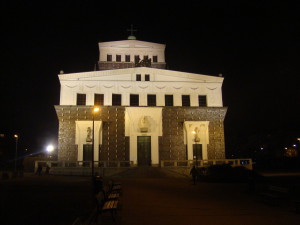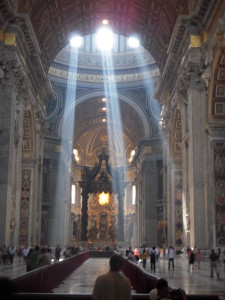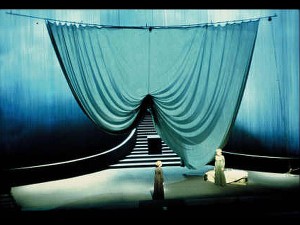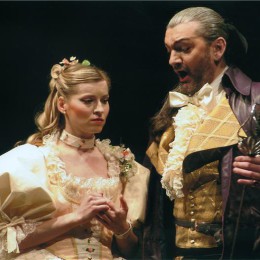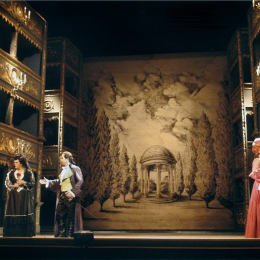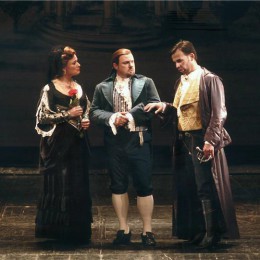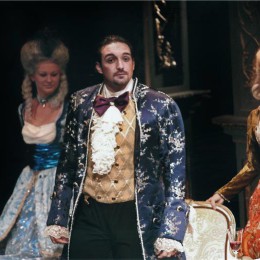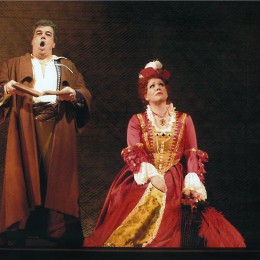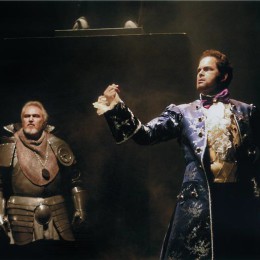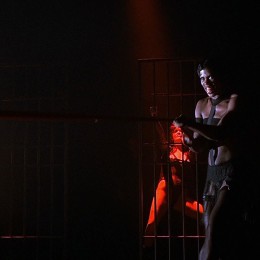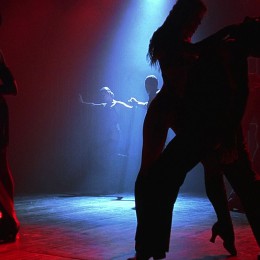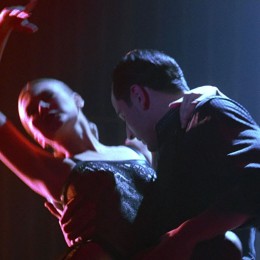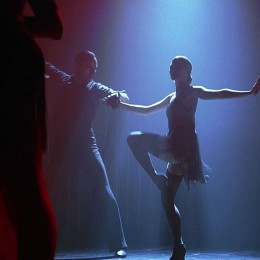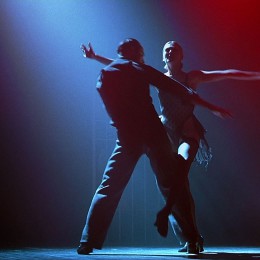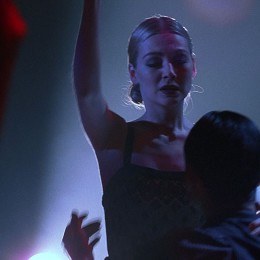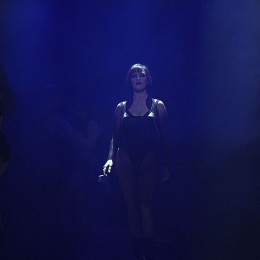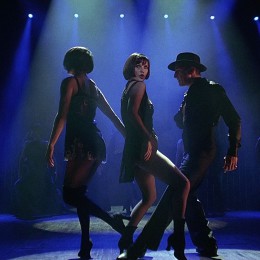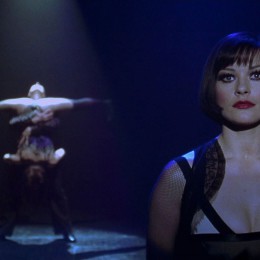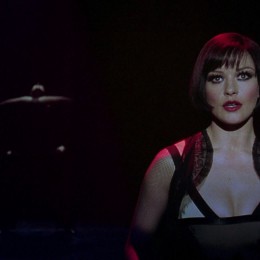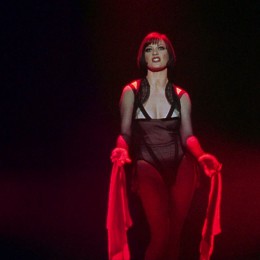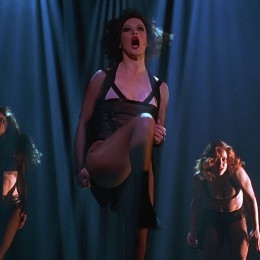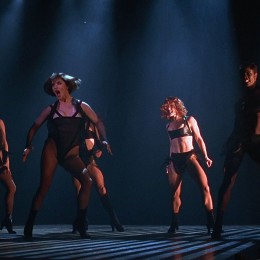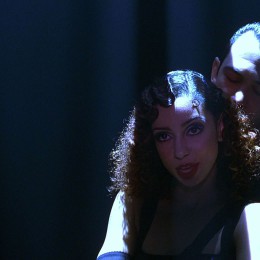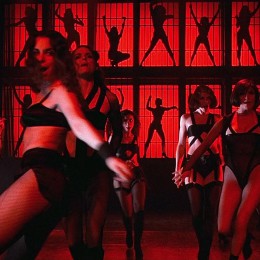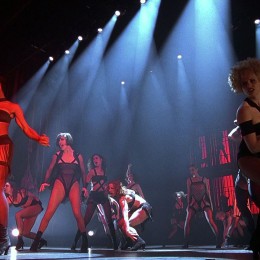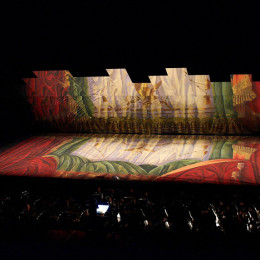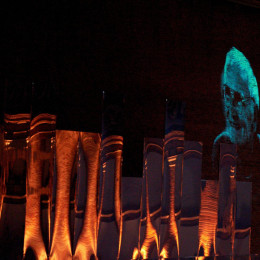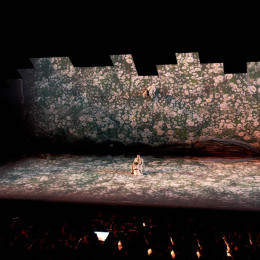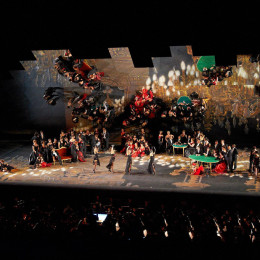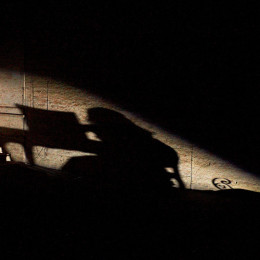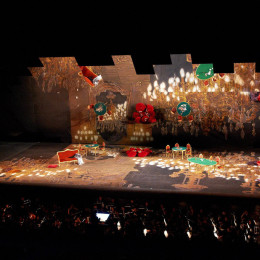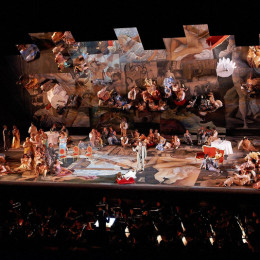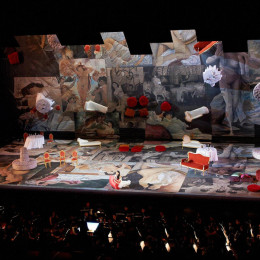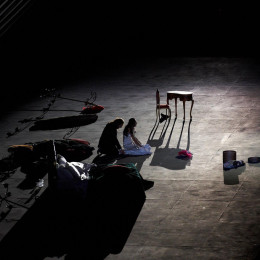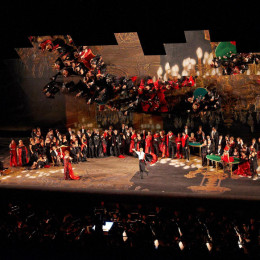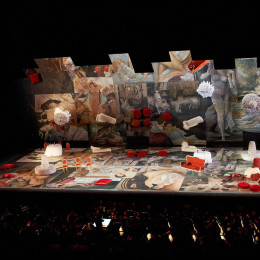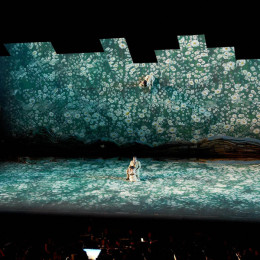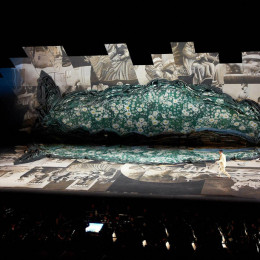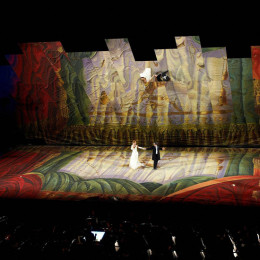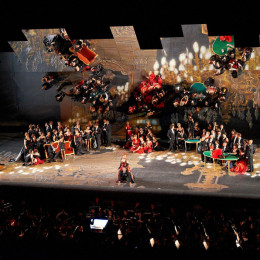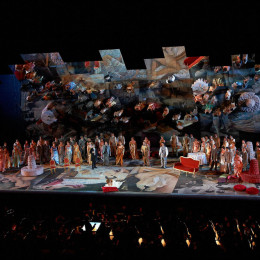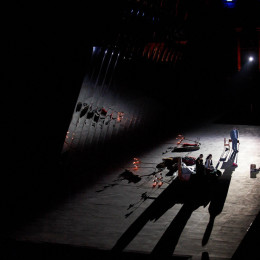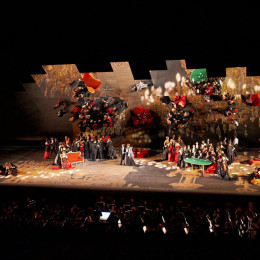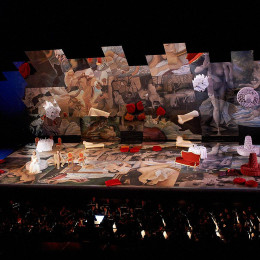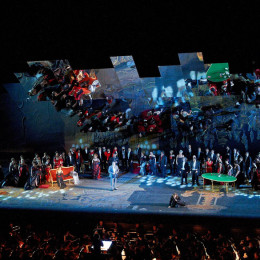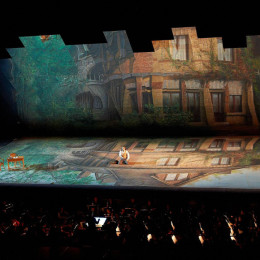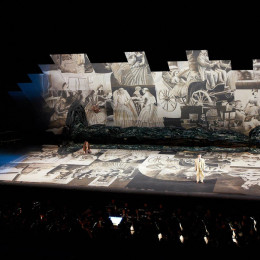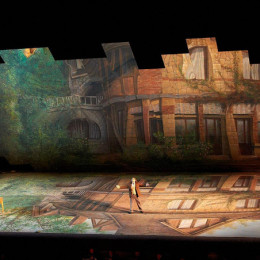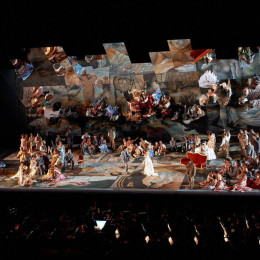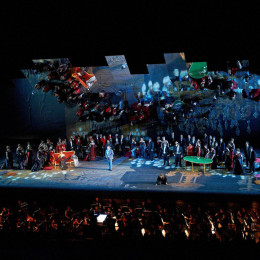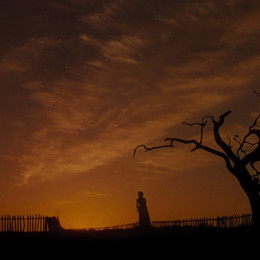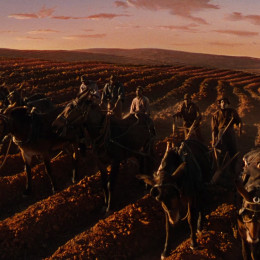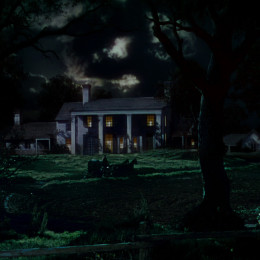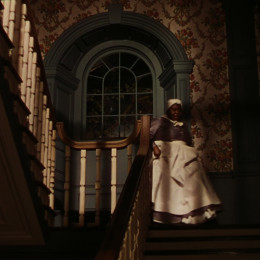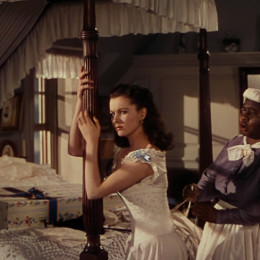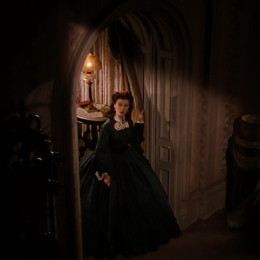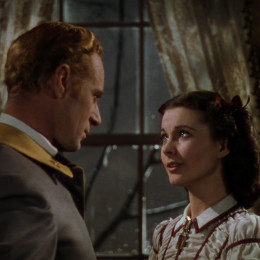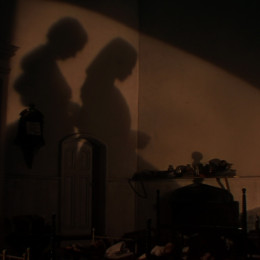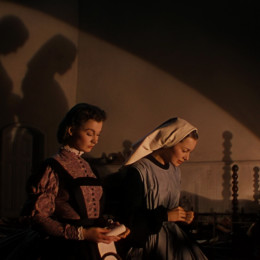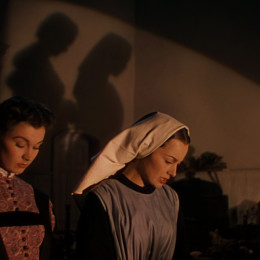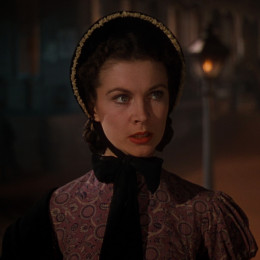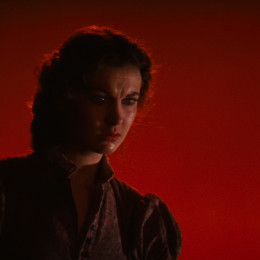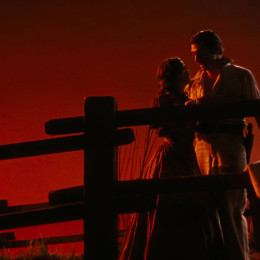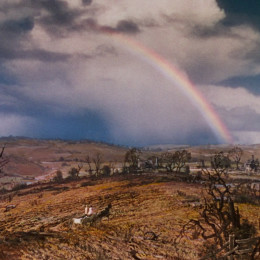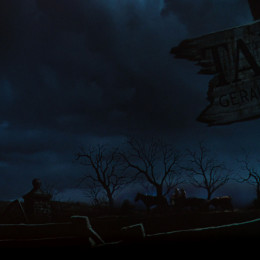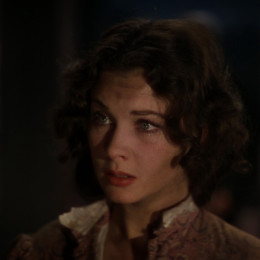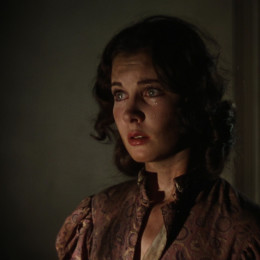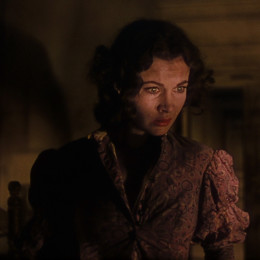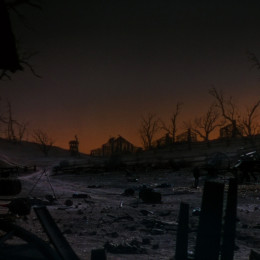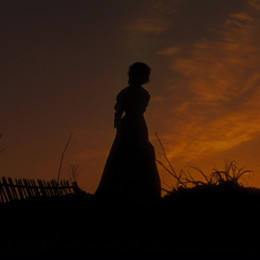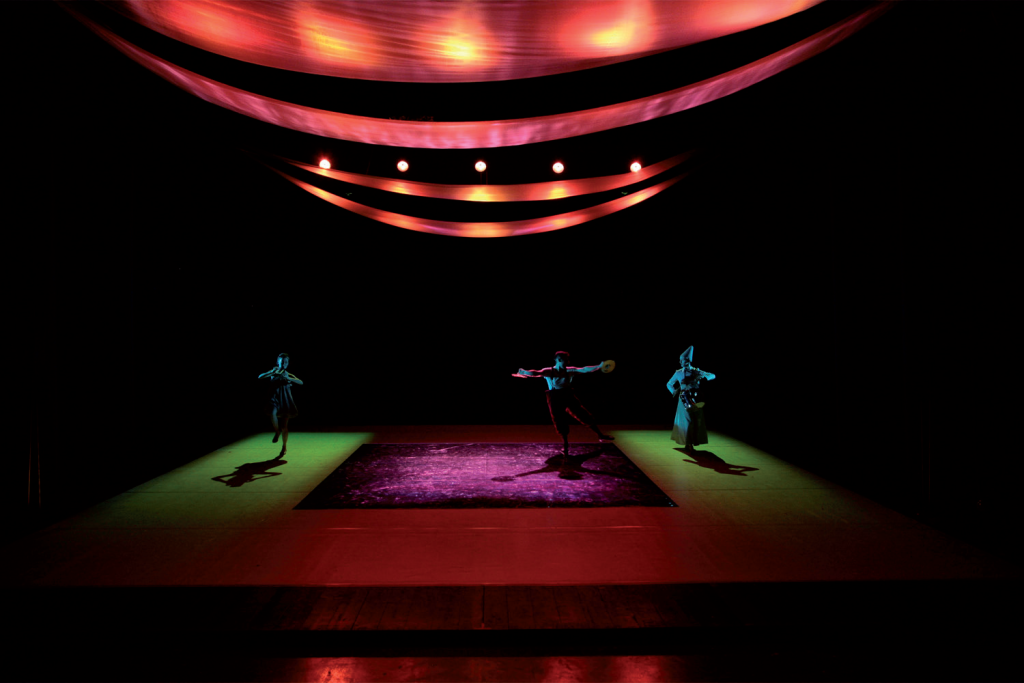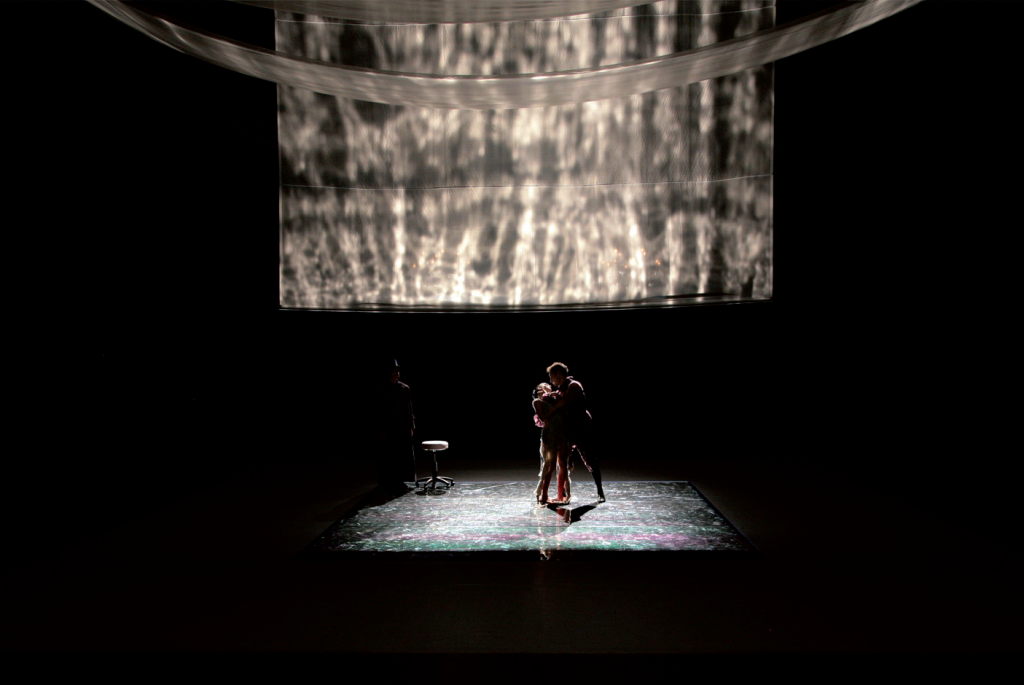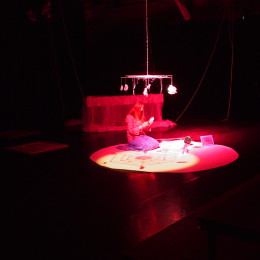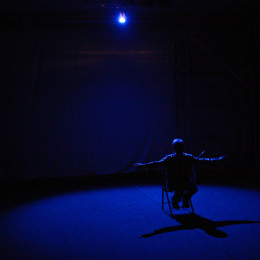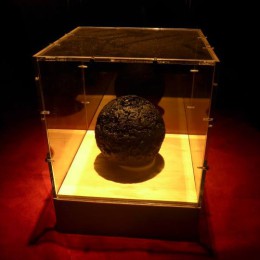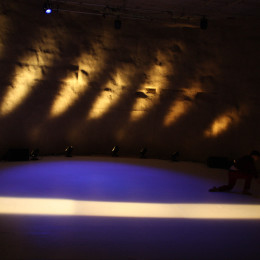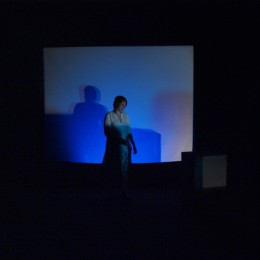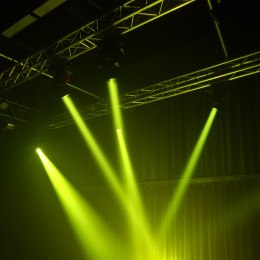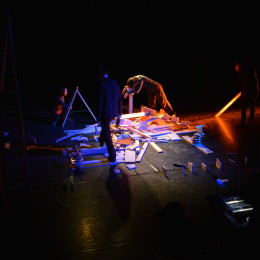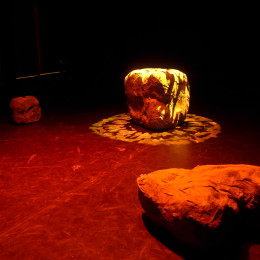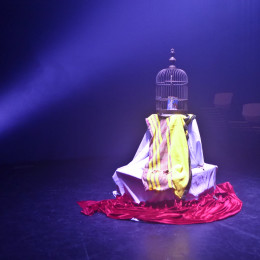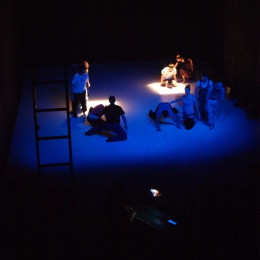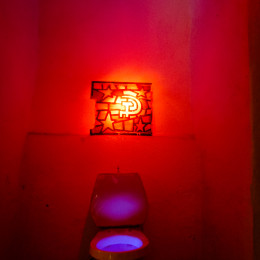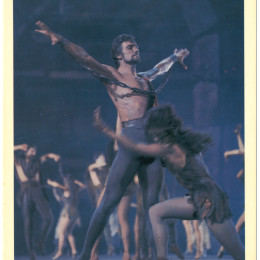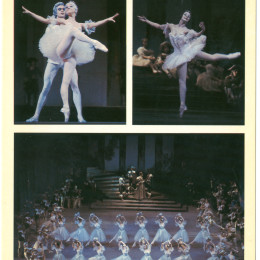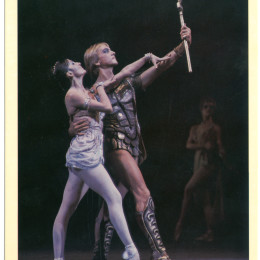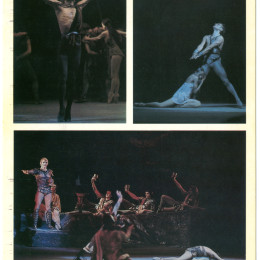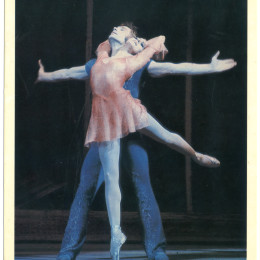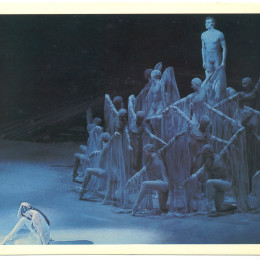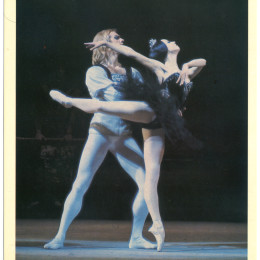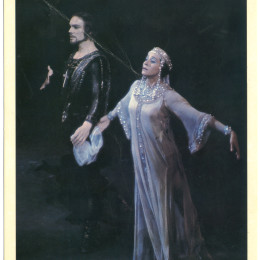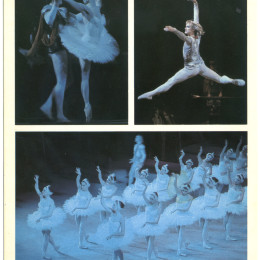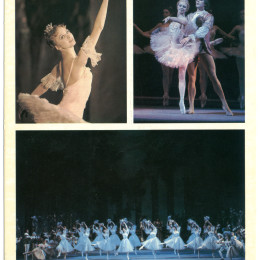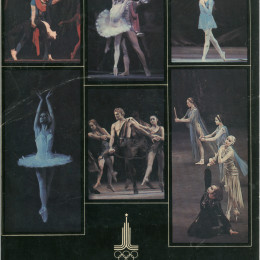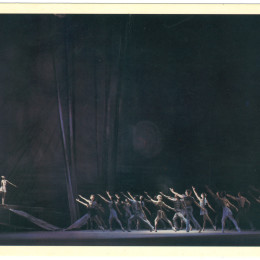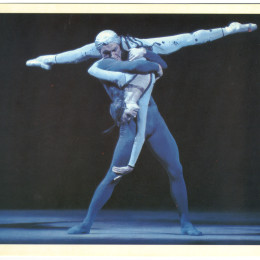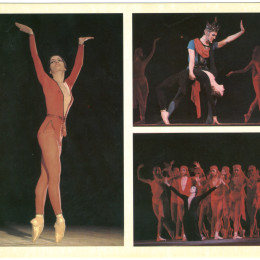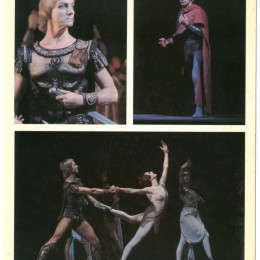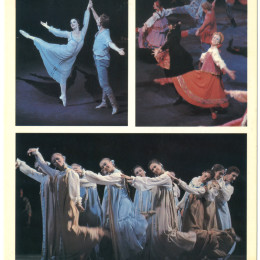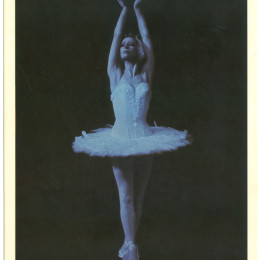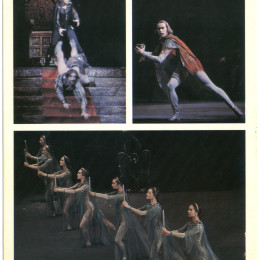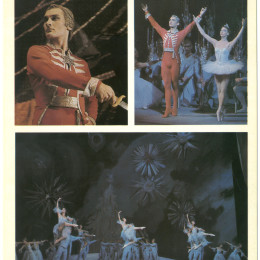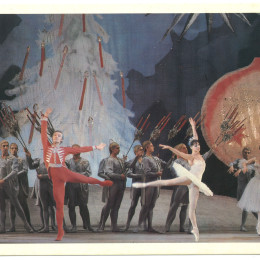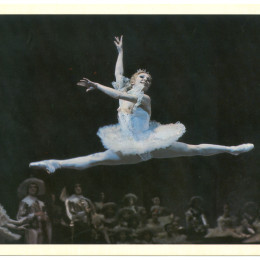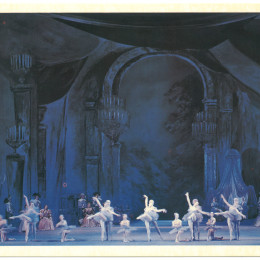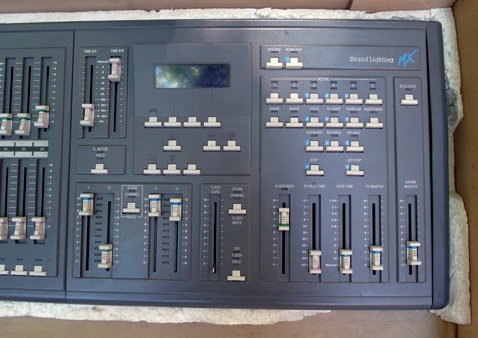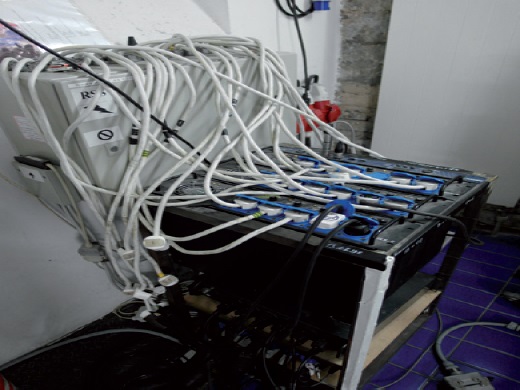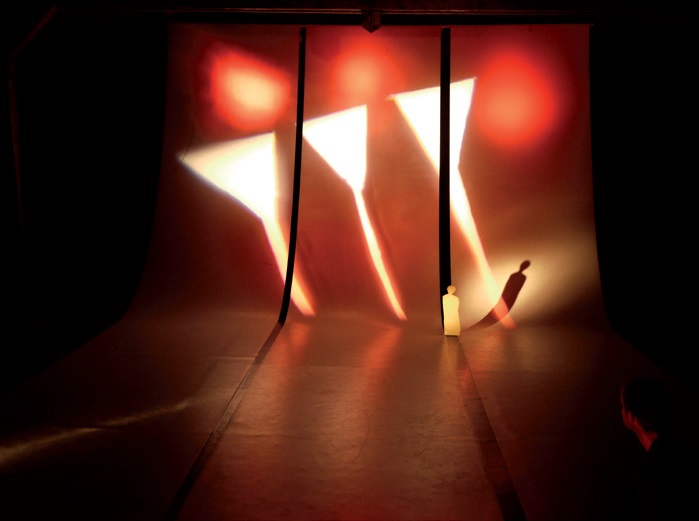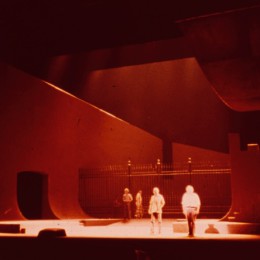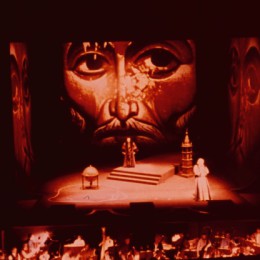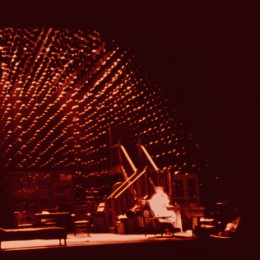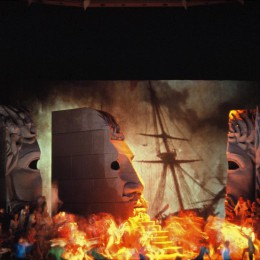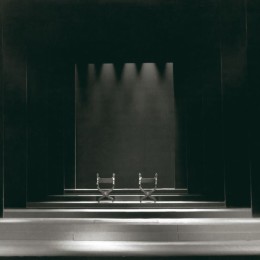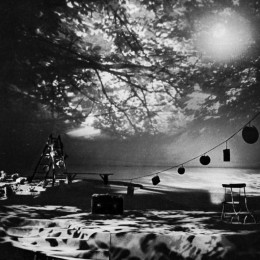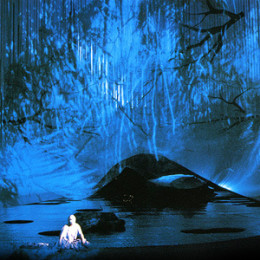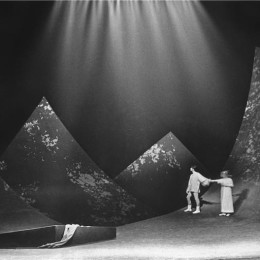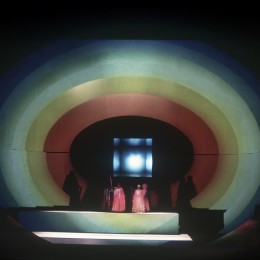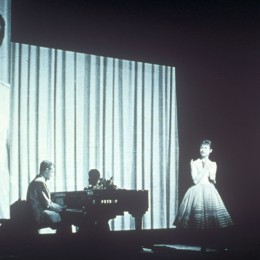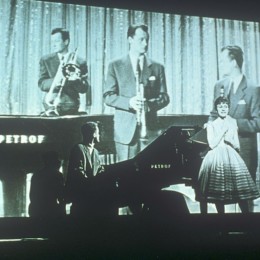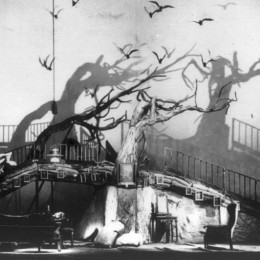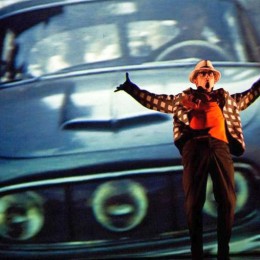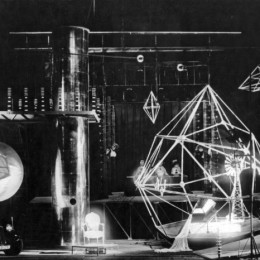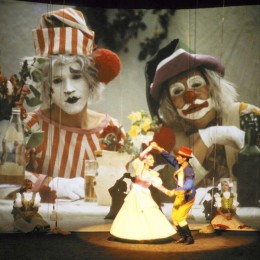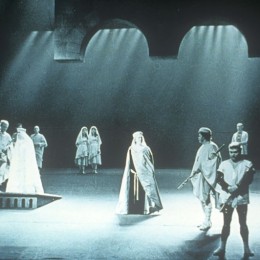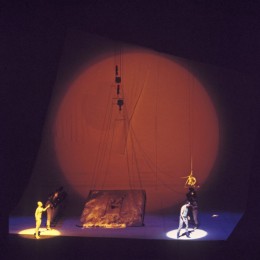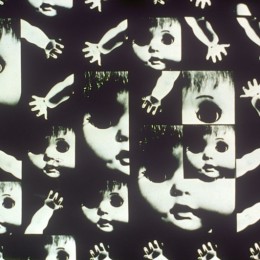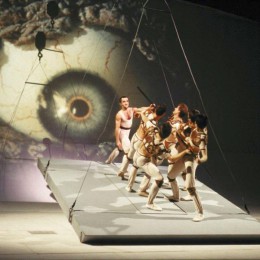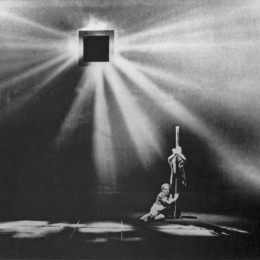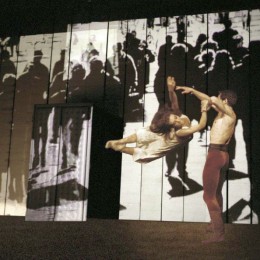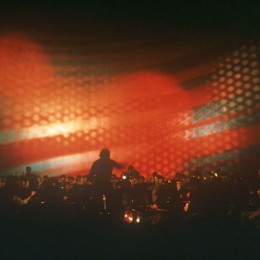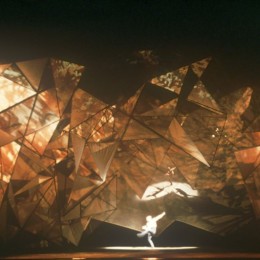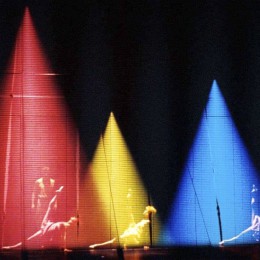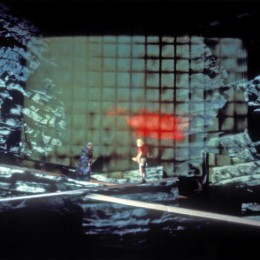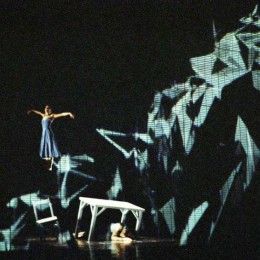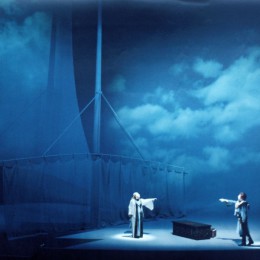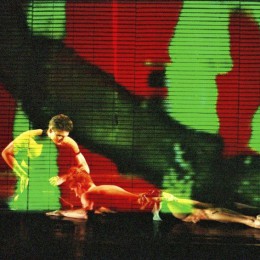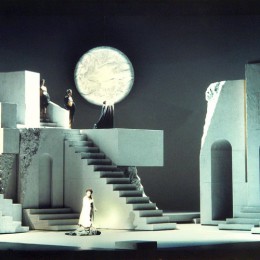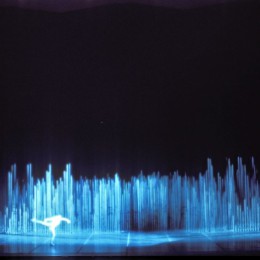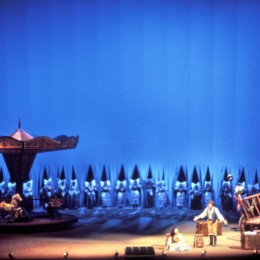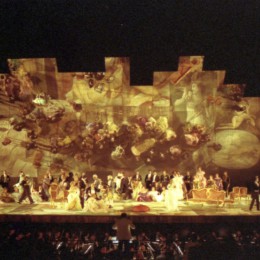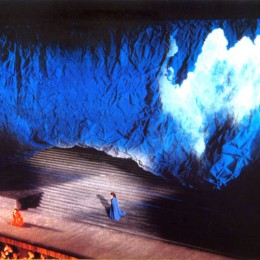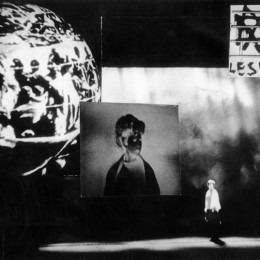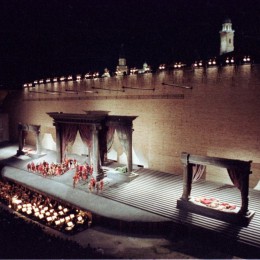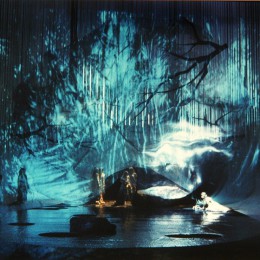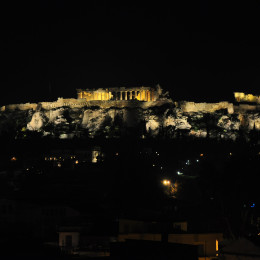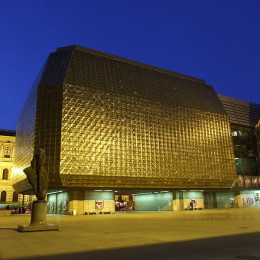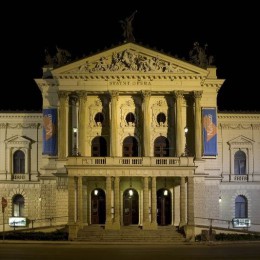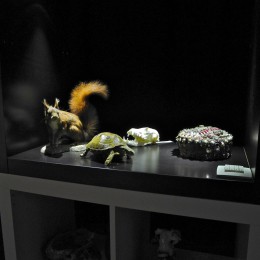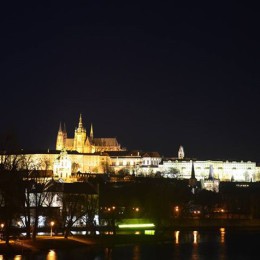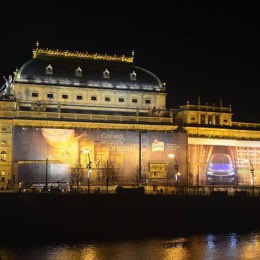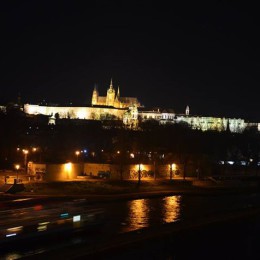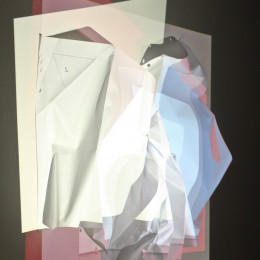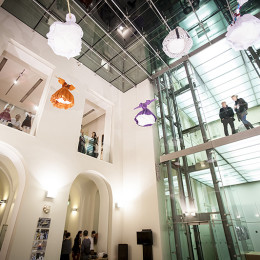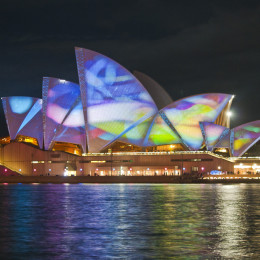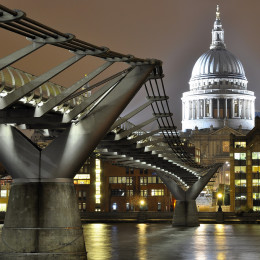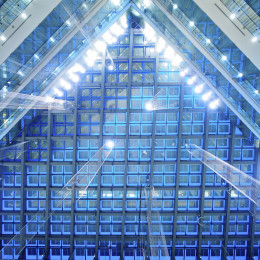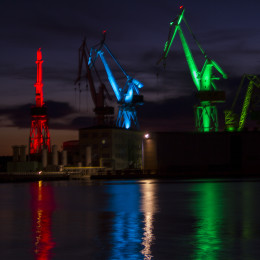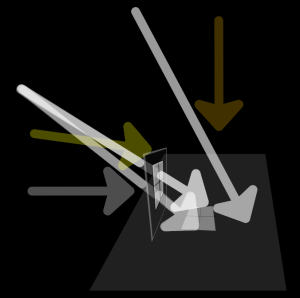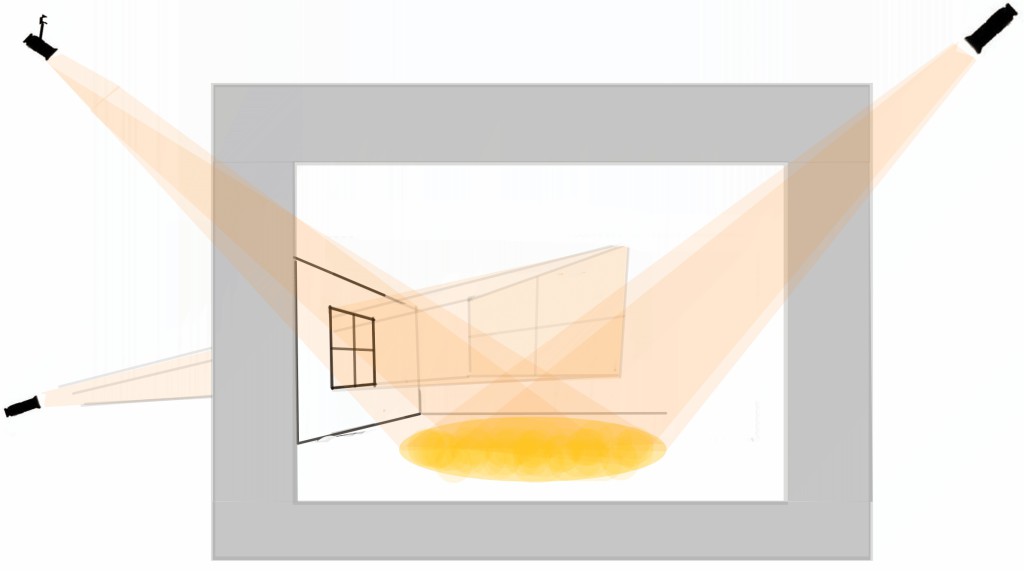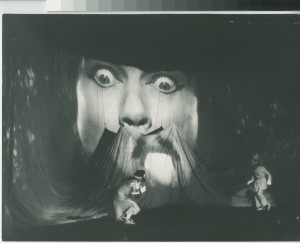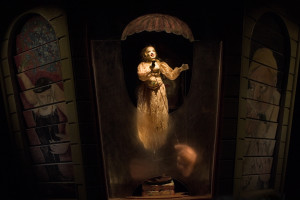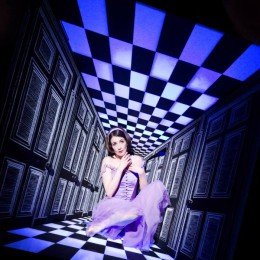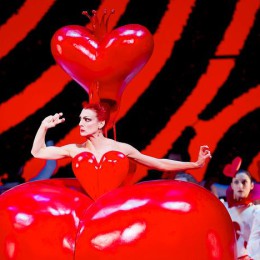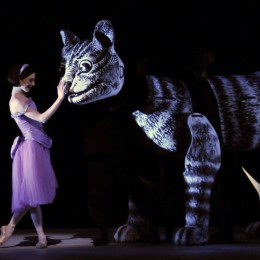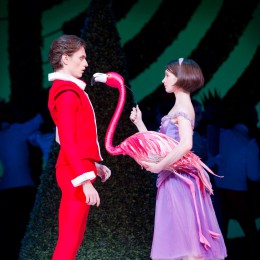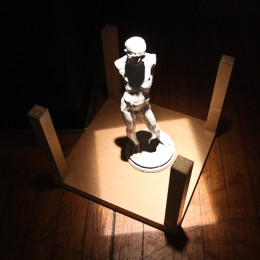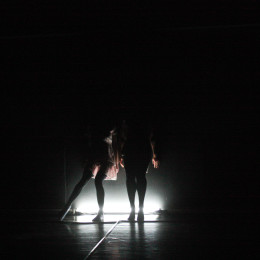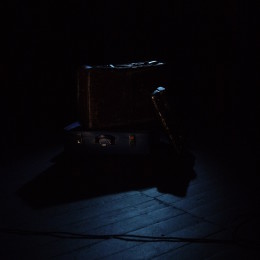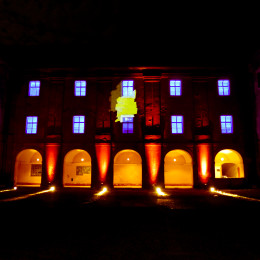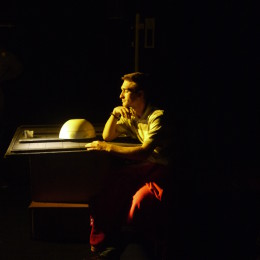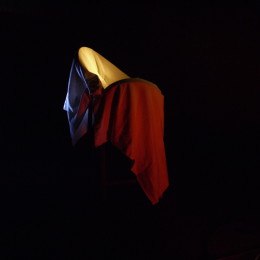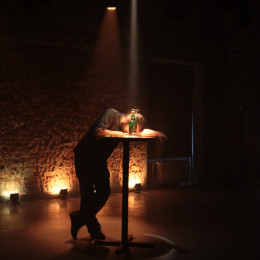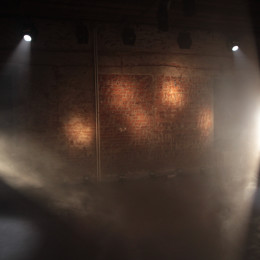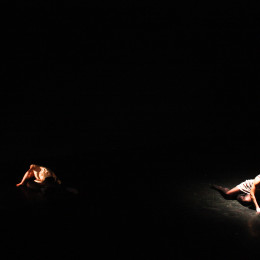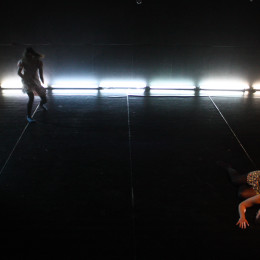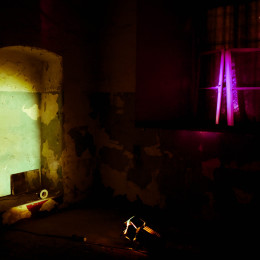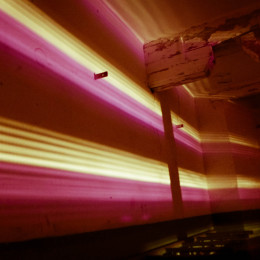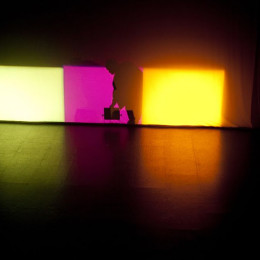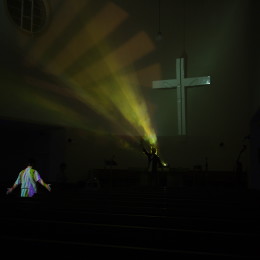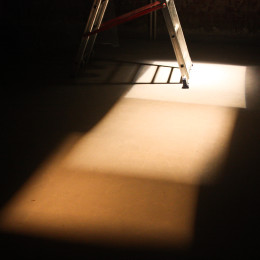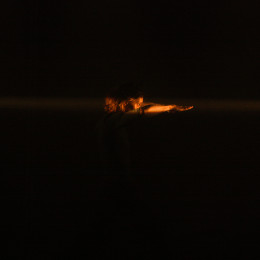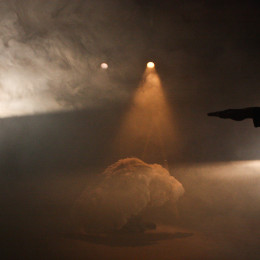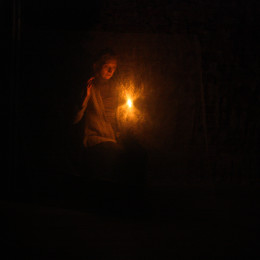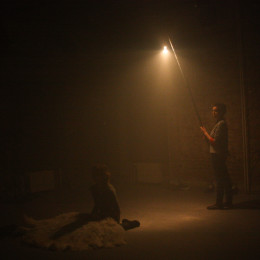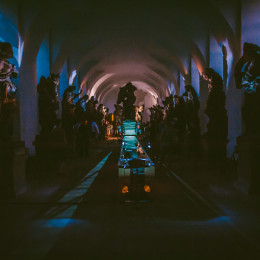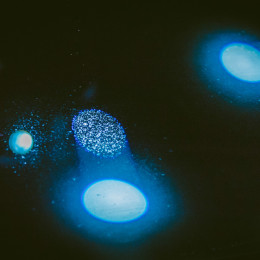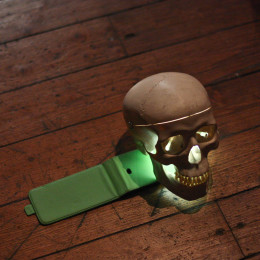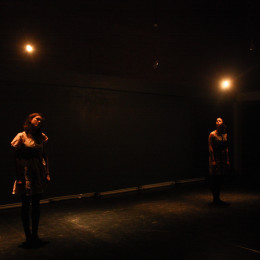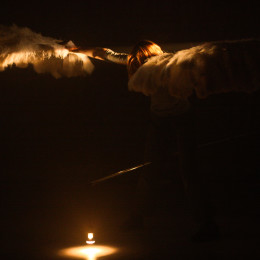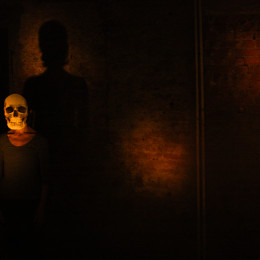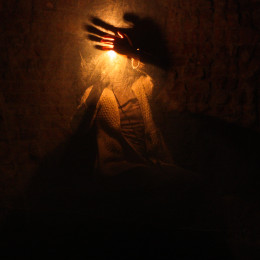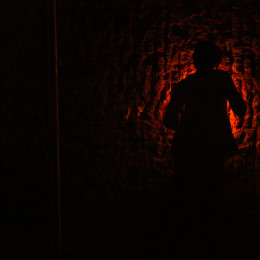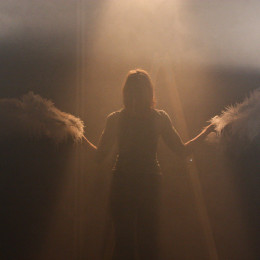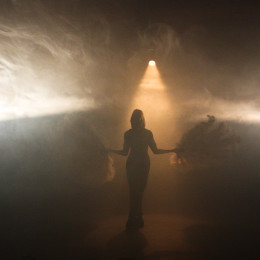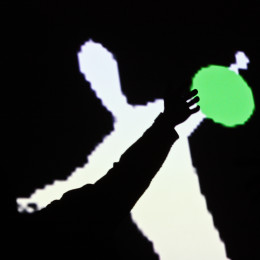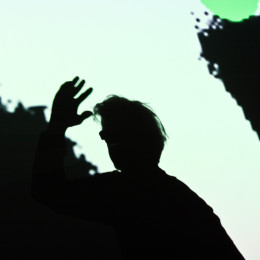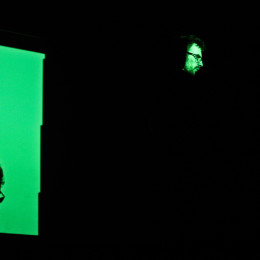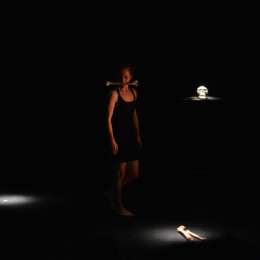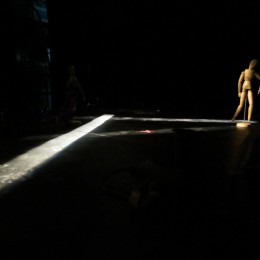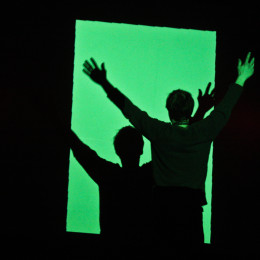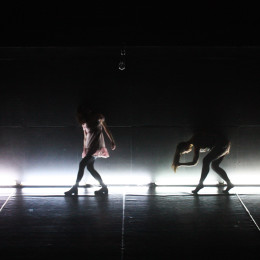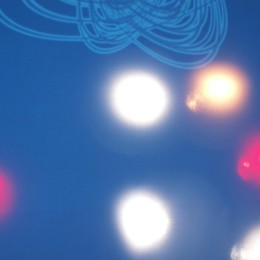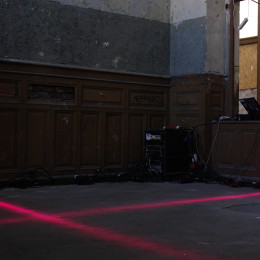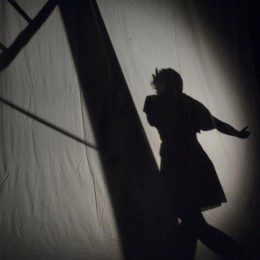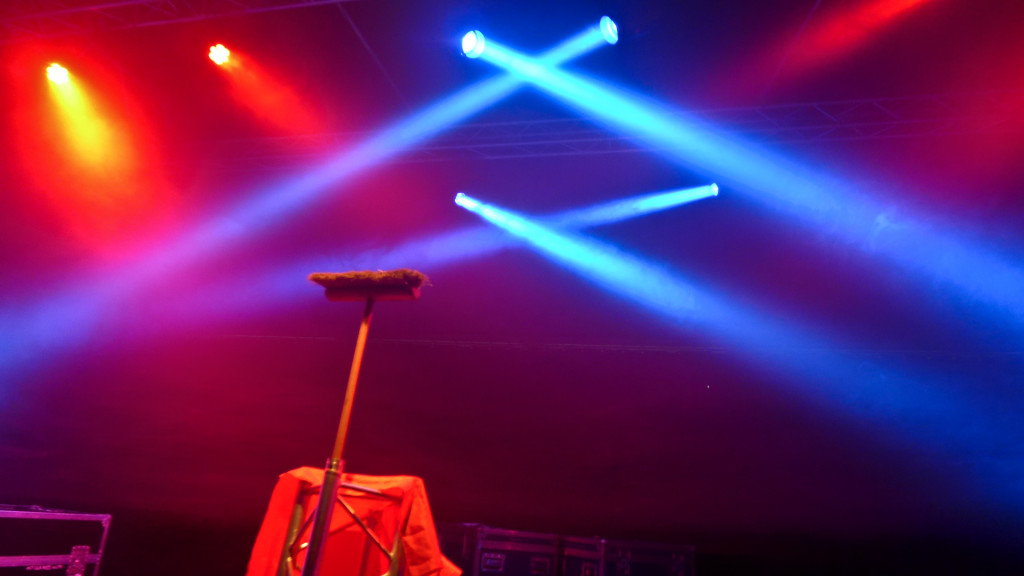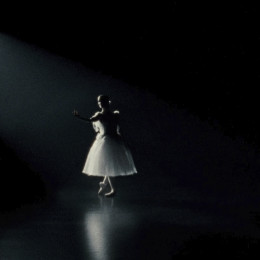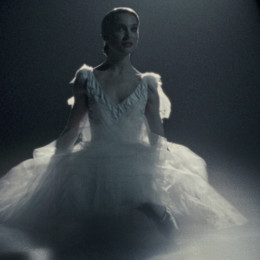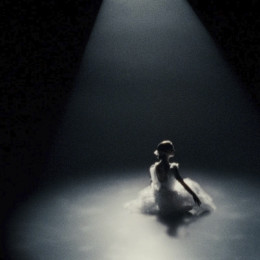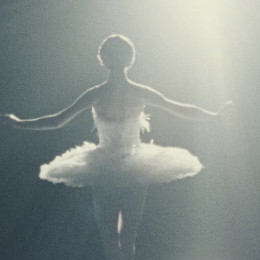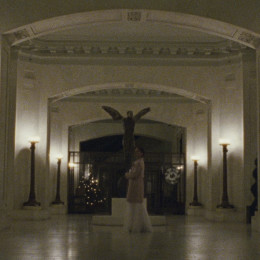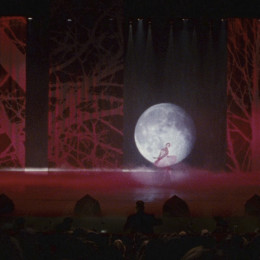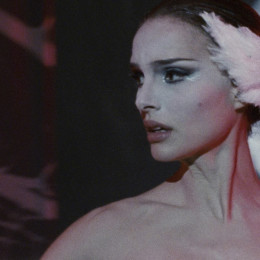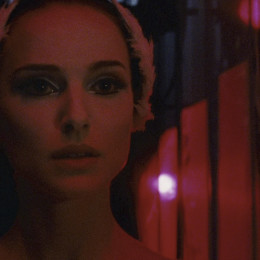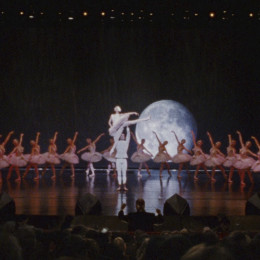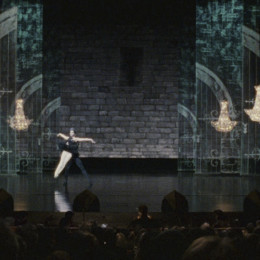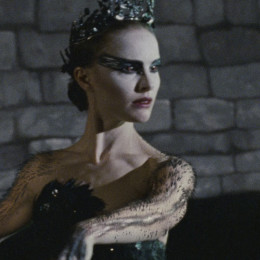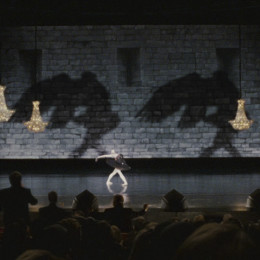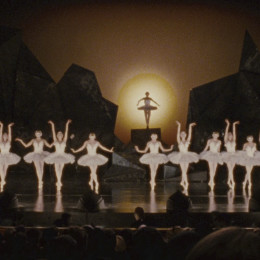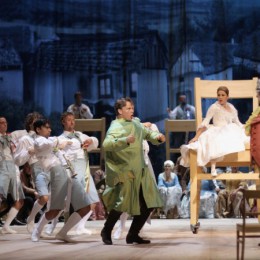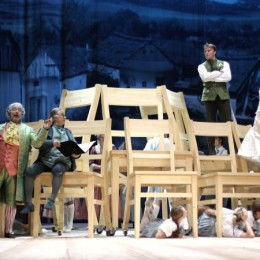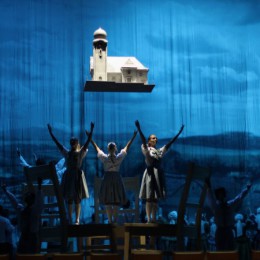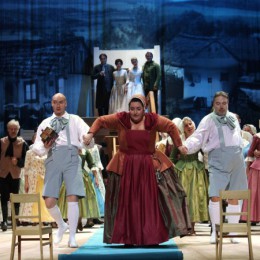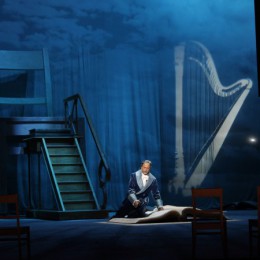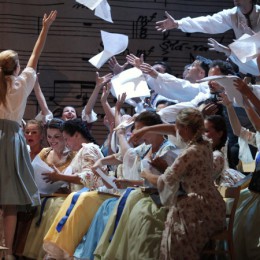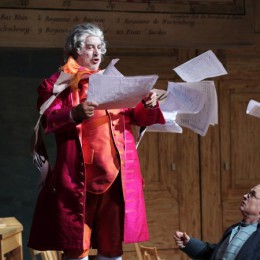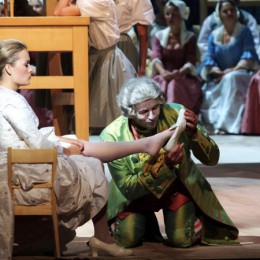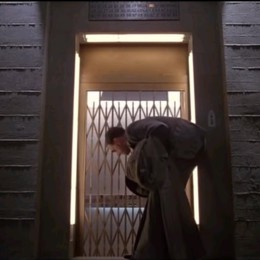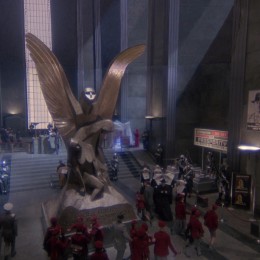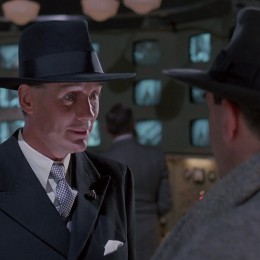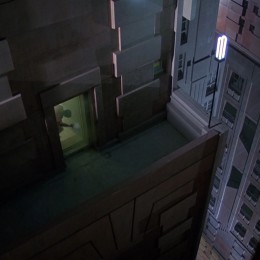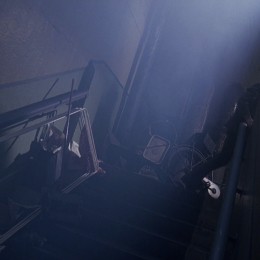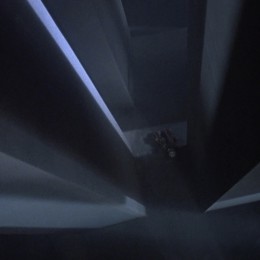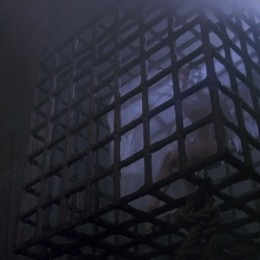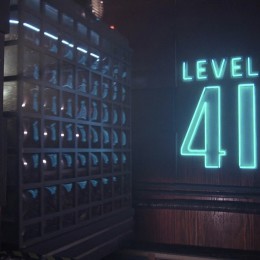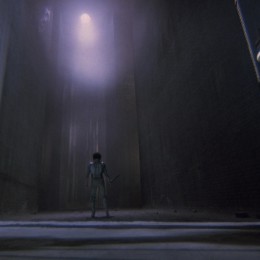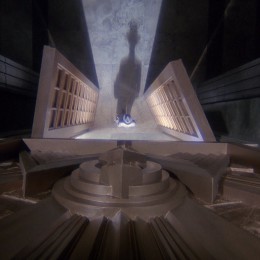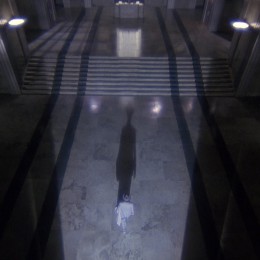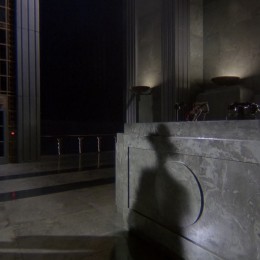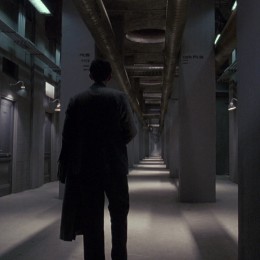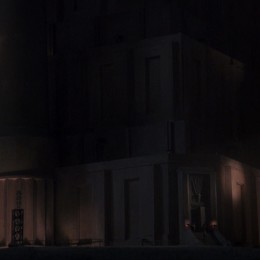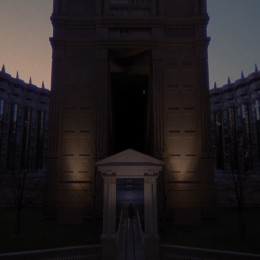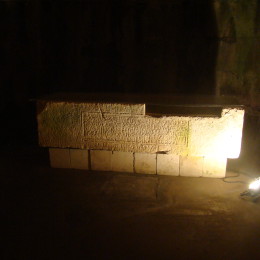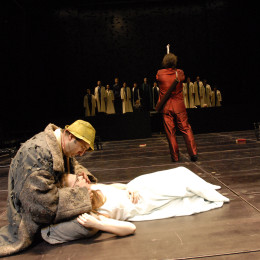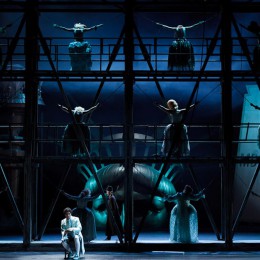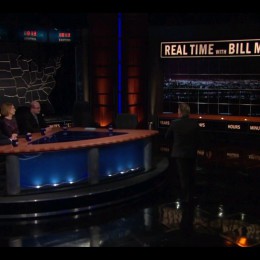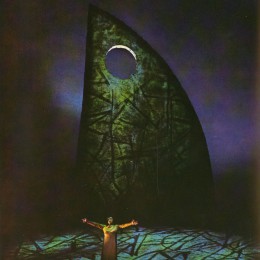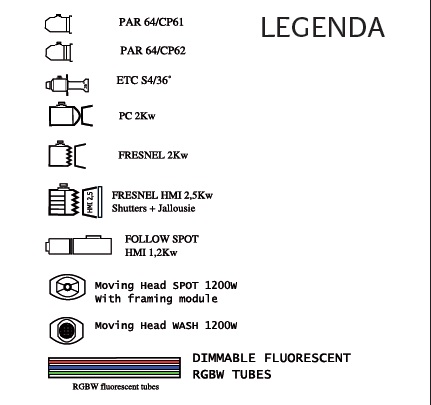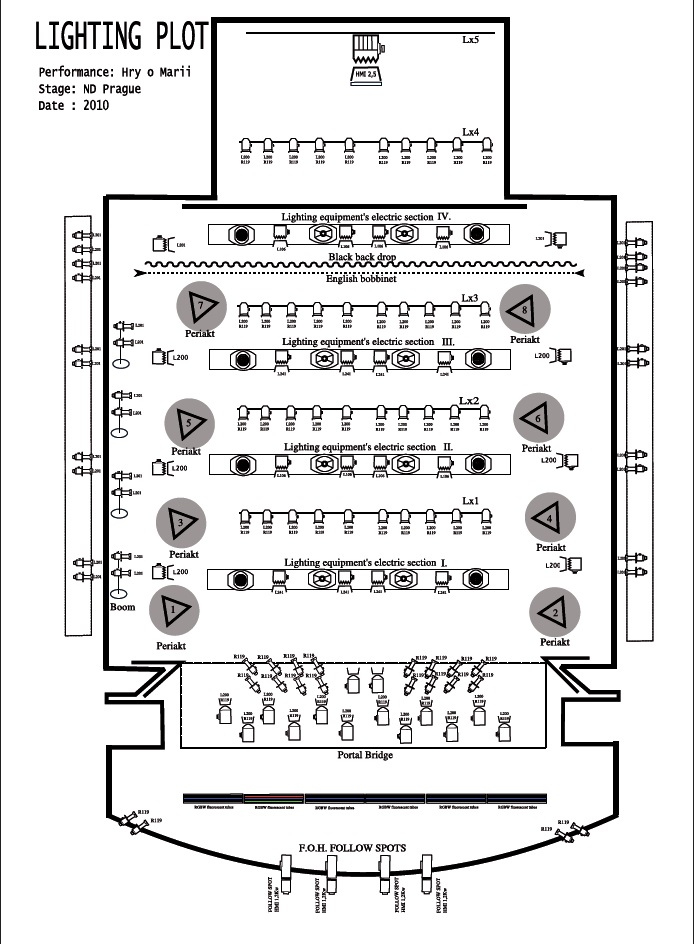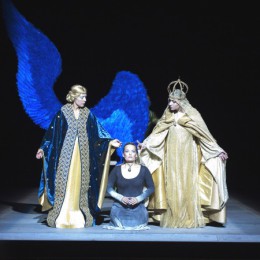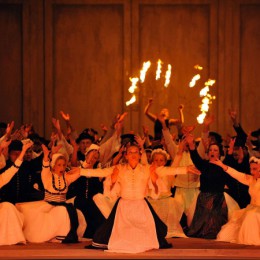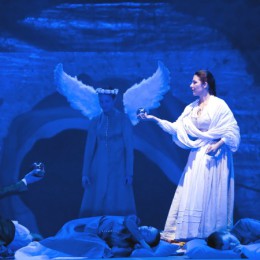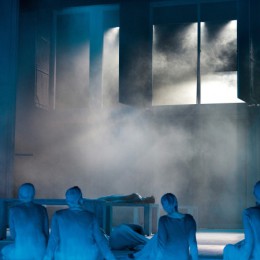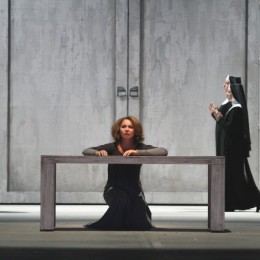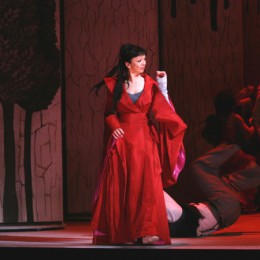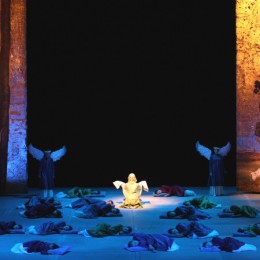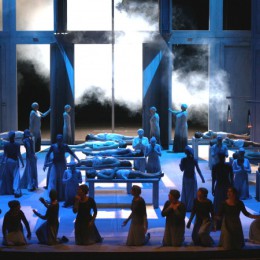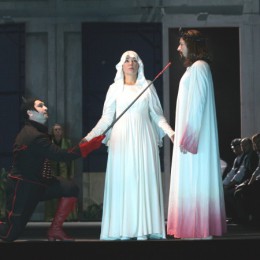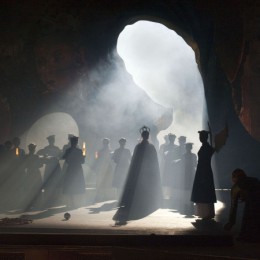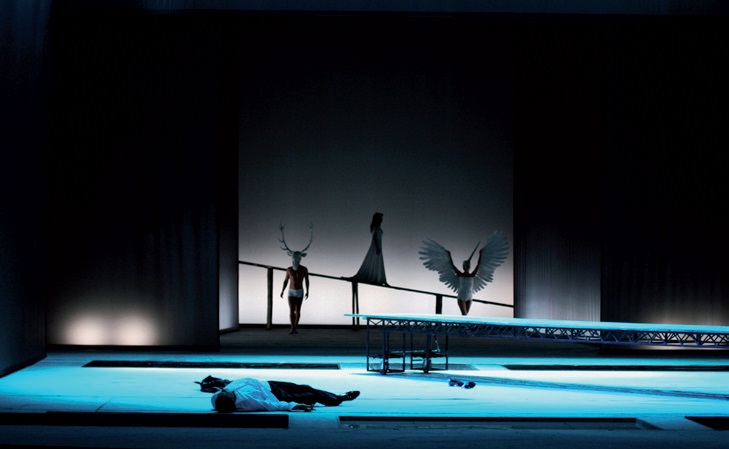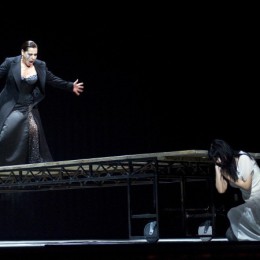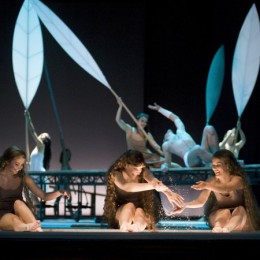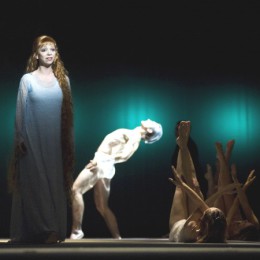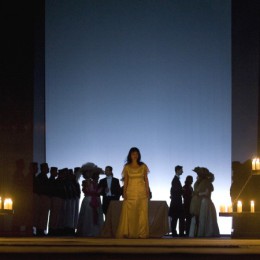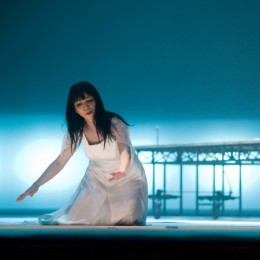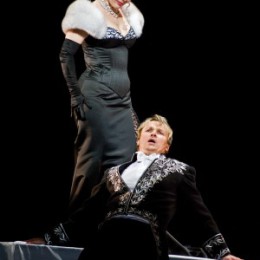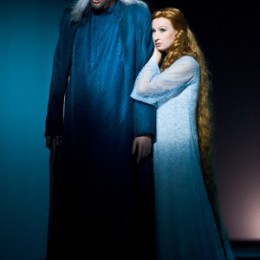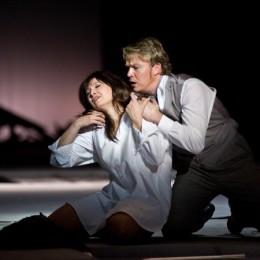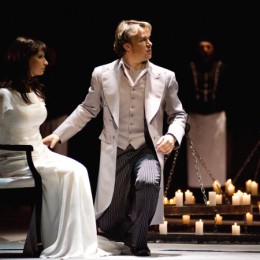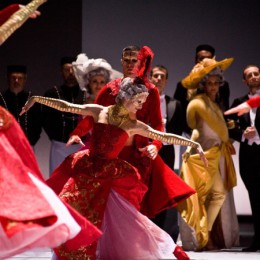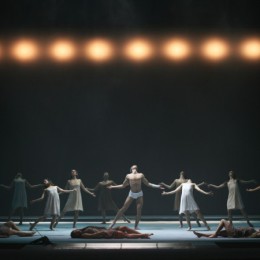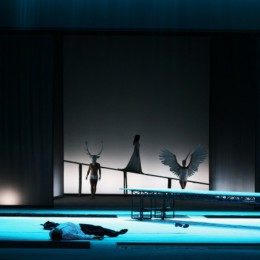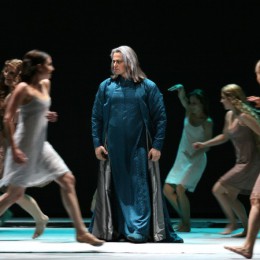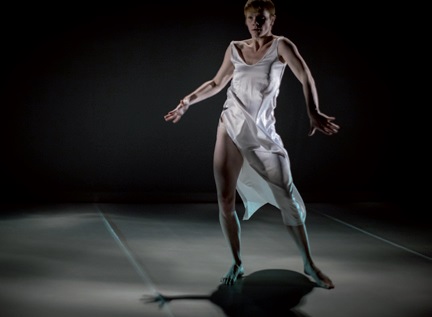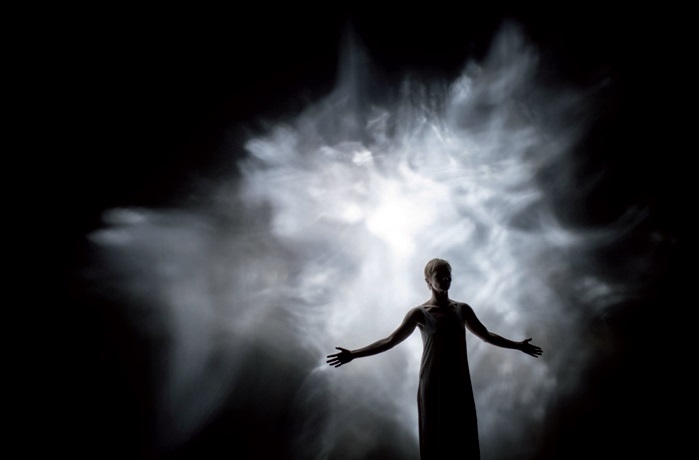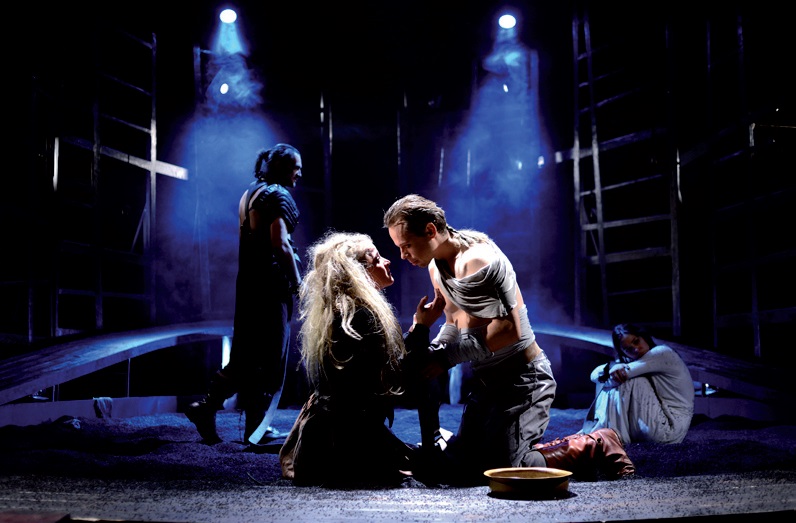“Light could be an artistic mean of expression”
ὁ θεὸς φῶς ἐστιν καὶ σκοτία ἐν αὐτῷ οὐκ ἔστιν οὐδεμία.
God is light, and in him is no darkness at all
1 John 1:5
Introduction
The fifth lesson deals with the lighting design from the operational point of view. How is lighting design executed? What are the main concern during preparation of design? What is the process of creation of lighting design? How to create a cue?
The goal is to incite creative thinking about the light and its aesthetic role (formation of visual perception) as well as a functional role (visibility, concealment and unveiling of the space, secret). To learn how to combine techniques (direction and quality of light), color, intensity, dynamics and psychological meanings that are derived from it. To consider the whole, the chronological development of a performance.
Main areas of studies in this lesson:
Ambiance, cue, time axis (succession of changes, gradation), dynamics of changes, timing of changes. Adaptability of the spectator’s eye (“ White”, intensity of light). Key light, fill light, actor´s light. Drama vs. Dance.
Communication with the director, choreographer, set designer – assignment, initial input of ideas. Concept of lighting design, technical solution. Limitations concerning available technology and technical conditions, concerning actors and their actions, concerning spectators and their comfort, security ( strobo – epileptic etc.)
Time requirement for a lesson:
Approximately 6 hours.
Author and tutor for the lesson:
The lesson was prepared by Henk van der Geest with cooperation of František Fabián, Šimon Kočí, Daniel Tesař, Jan Beneš, Vladimír Burian and Jan Purkert. Photos courtesy of Institute of Lighting Design and Jan Purkert. Other sources are quoted separately as appropriate.
The tutor of the lesson is Henk van der Geest who is available for answering questions between 7.8 – 21.8 of 2015, you can contact him via the contact form at the end of the lesson. Reply is not guaranteed, unless submitted within the given period of time.
Introduction Test
Key terms
Lighting design is the deliberate use of light to achieve a practical or aesthetic effect.
Cue is generally the trigger for an action to be carried out at a specific time or a recorded lighting state in a narrower sense. Cue is one sequence of a performance.
Crossfade is a blending of the current and next cue. One set of lights is being dimmed and the other are coming on.
Hardpatch is the physically interconnected circuits on stage with the respective “dimmers”.
Softpatch is the assignment of interconnected numbers in graphical interface of a lighting console.
Wait (follow) is the time, for which the actual cue is running a after its expiry, it starts blending automatically into another cue.
Delay (Time to go) is the delay of the start of a change from its launching by a button – useful in situations where the operator has to execute another action.
DMX512 (Digital Multiplex) is a standard for digital communication networks that are commonly used to control stage lighting and effects.
Key light is visually dominant lighting of a section of a scene, which is essential.
Fill light – the additional light completes the context of the scene.
Contrast is a difference or an interval between two chromatic effects directly confronted.
Media servers are machines working comprehensively with visual information and it is common that optional masks and features are implemented in them for easier videomapping.
McCandless Method is a particular approach to providing stage lighting.
Composition is the placement or arrangement of visual elements or ingredients in a work of art, as distinct from the subject of a work.
Rule of thirds is a “rule of thumb” or guideline which applies to the process of composing visual images.
Golden ratio – two quantities are in the golden ratio if their ratio is the same as the ratio of their sum to the larger of the two quantities.
Framing is the presentation of visual elements in an image, especially the placement of the subject in relation to other objects.
Process
Technical rehearsal is a rehearsal that focuses on the technological aspects of the performance.
Dress rehearsal is a full-scale rehearsal where performers work out every detail of the performance.
Technical week is to the week prior to the opening night of a performance, in which all of the technical elements are present during rehearsal for the first time.
Read-through, table-read, or table work is a stage of film, television and theatre production when an organized reading around a table of the screenplay or script by the actors with speaking parts is conducted
Previews are a set of public performances of a theatrical presentation that precede its official opening.
A lighting control console (also called a lightboard, lighting board, or lighting desk) is an electronic device used in theatrical lighting design to control multiple lights at once.
Luminous intensity is a measure of the wavelength-weighted power emitted by a light source in a particular direction per unit solid angle, based on the luminosity function, a standardized model of the sensitivity of the human eye.
Lesson 5
1. Goals of lighting design
What kind of a world is to be shown to the spectator? Which clues are to be given to him? As much as a performance concerns, a lighting designer should have an idea what kind of lighting he wants to have in the key moments of the performance. Naturally, it can be on hardly worked out in very specific details right away.
The priorities of the performance and of the plot have to be taken seriously. They are determined to a large extent by the type of a performance and in the first place by the fact, whether the spoken word is in the center of attention.
Actors, especially in drama, have to be seen rather clearly, unless there is an artistic reason for the opposite. It is harder to understand anybody, to whom one cannot see into the face. This fact is well known to those who master a foreign language to some large extent, which is still however not completely perfect. Gesture and facial expression help to understand us considerably the content of the message. Thus even people who have fairly mastered a foreign language face rather harsh difficulties to understand, while speaking on the phone as deprived of many other clues that usually buttress the communication.
The actors during the performance are usually directed to each other, unless they don’t utter an important monologue towards the audience. The lighting then has to combine these two requirements.
On the other hand in music and dance, it is preferred to attract the attention to parts of bodies, concerts require some kind of harmony with the music, installations may have different goals.
Several questions, which are to be taken care of by the creative team, concern the rhythm of the performance and what is the role of light in each section.
– Various places – if the drama plot develops on more locations, would it be convenient to assign one color, quality or position of light to a specific place?
– Various times – when it is convenient to evoke various daytimes, can they be indicated by positions of lights of rather by a change in colors?
– Various emotions or psychological states – can a certain color, quality of angle of light be used for it?
– Various modes of reality – dream vs. reality, desire vs. reality.
Don Giovanni, Prague, design Josef Svoboda (foto: Hana Smejkalová) 2006.
Framing and the center of attention.
Lighting determines, which part of the stage are to be seen and which are not. Lighting determines framing of the scene and the center of attention and thus can significantly influence the final result. Sharp angles of light in drama situations might enhance the drama effect. Some actions can be made by lighting as fire with blinking red of orange light, light penetrating through threes with gobos in soft focus.
Lighting of a performance can be described as four interrelated categories of intensity, location, color, shape, which all are in relation with time.
1.1 Intensity
As much the intensity concers, one of the crucial decision is to determine, which shapes and how many of separated areas are to be lit during one sequence of performance – cue. The position determines location and direction of a light source.
1.2 Position of the light beam
in the space, from where the light comes from, what stands in its way, how hits the target, and what happens next with cast shadows. It is called a focus.
Angle of lighting influences perception of the things within the sight, scene or close to the act.
See lesson N. 4
1.3 Color
See lesson N. 2
1.4 Shape
The shape including the edge of light, whole beam and quality of light. The main distinction between various types of light lies in this aspect. The shape is a label for edges of the light beam, the entire beam and quality of light. It concerns a description of influx of light. Light beams can be with sharp or blurred edges, with or without increasing or decreasing intensity. To shape the light beams, shutters are one of the main tools.
A lighting designer in a theatre would be familiar with theoretical and practical side of technical equipment that creates the cue at the stage, he should be able to imagine, how the lit scene would look like and what impact would be induced by changing cues.
2. Cue
this is how a lighting atmosphere can look like at the stage
A cue is a basic brick of which the performance is built. In a theatre performance, a sequence of cues composes the lighting design. It’s prepared during rehearsals when a lighting designer uses the equipment for lighting the scene. The time when a certain cue should appear is bound to the script and this moment is called a cue point.
From the technical point of view, a cue is then a selection of channels that are stored with a certain input value for creation of a certain ambiance that was conceived with intent to affect viewer’s perception. It can be as static as dynamic.
A cue is usually created when some given channels or groups are switched on according to the lighting design and correspond to the wanted artistic expression. The comprehensive information is stored as a cue under a number or name that is in some way related to the time in the performance when it should be initiated. Every cue is recorded by a stage manager into the prompt book. During the performance, changing the cues is the task of an operator, technician who process the performance from a lighting console desk. In terms of lighting design, it is always necessary to build a lighting atmosphere with the operator first, i.e. to create lighting for a specific scene, action on the stage, from a focused setup. After all the required instruments are focused and their intensities harmonized into the desired shape, it is necessary to fix the lighting atmosphere and save it for being able to replicate it. There are several names for such an atmosphere (often based on the nomenclature of the function keys of the individual counters): but usually it’s called a cue.
These individual sets of atmosphere during a performance are arranged in a cuelist – a chronological order of cues, transitions between its items are called changes. A change can be possibly executed manually (Crossfade, a blending of current and next cue) or automatically by pressing GO button, when the change occurs with preset time and the fadeout speed of the current cue may be different from the next fadein (one also can delay or set different time according to functions on the lighting console board e.g. according to the music). This is another essential component of a lighting design – timing. In the out come, it is one of the most important components of a seen performance. Dynamics and timing of changes determine tempo and rhythm of a performance as a whole to a large extent.
A lighting designer usually suggests timing of changes (fadein and fadeout times, respectively delay), but if the operator is sensitive to the action on stage or designer himself handles the performances, he certainly chooses manual crossfade, because he is able to respond to actual events on the stage and adjust the dynamics of light changes to the tempo and rhythm of the performance, even to receptivity or reactions of the audience. (If it is possible to perceive errors in the lighting during a performance from the perspective of the viewer, one first perceives the discrepancies in timing and dynamics of change.) The above said about the timing or cue concerns theatrical space where a specific production came into existence. It can be otherwise when hosting on other venues where the operator (due to spatial and time dispositions) must resort to handling with the submasters, which are programmable “faders”, in which it is possible to record a specific cue (atmosphere) or group of lights at preset intensities and manual “pulling up” or “pulling down” of a fader to determine the dynamics of change. It should be added that the number of submasters on the control board is limited (typically 12 to X, according to the type of a control board), in contrast to the number of changes in a performance. Then the operator is required to prepare a group of lights that are used in different cue, load them into submasters and achieve the adequate atmosphere with their combinations.
Work of the operator of a lighting control board
A lighting designer or technician – in some cases of the theater operation, the difference is almost negligible. How so? Because the task of a lighting team is to light, program and check the performance during few moments. It is therefore necessary to (in the role of a lighting designer) to get rid of the individual beliefs and enter into the field of routine terms, designations or commands that are common, understandable as to the technical team as to artistic production. The petty nuances have to be expressed by the help of other attributes, but it’s better to do so in the moment when at least 70% of the technical work is done. The basic terms are often derived from the executive buttons and command options of a conventional lighting console (though such a description is arguable and there might be a better way of describing it). A large role in it is played by logic, syntax and terminology of the console. That determines its behavior and thus in a hyperbole, it is “only human”. If there occurs a mistake, it isn’t necessarily caused by the so called human factor, as the argument goes further, because the console is able to do it, only the operator is doesn’t know how to do it. As it was once expressed : “I always read the manual only when something broke. Now I do it vice versa, and it pays off. “
2.1 Change and timing
It’s always a number that represents a group of lights with different intensity, color, with defined parameters, etc. and its order in the timeline (performance, concert etc.). Basically, it is a specific lighting atmosphere. Here, the designation of such “mood of lighting” is the most widespread term – cue. Naturally, a cue undergoes changes during a performance, so the term change is really a change of one cue (lighting atmosphere) into another one (day x night, winter × summer etc.). In a certain sense, the work of a lighting designer is based on “changes”. A change is often distinctive in order to incite the audience to understand clearly the turn of events – place, time, emotions, etc. In most cases, regardless of the genre, the change is really so clear to the audience, but a part of the productions works with the so called invisible change, which is a change of a lighting atmosphere during a really long period of time (in the theater, just about 40 seconds is enough for the viewer not to see it), so that the viewer does not perceive the transformation consciously. It is interesting, but not necessarily the better; the decisive criterion is the dramaturgy / direction of changes and the entire performance as well. Changes are handled by the so called crossfade , i.e. by a cross blending of the current and the next cue. For manual handling, some console boards are equipped with a special sliding fader – crossfader. Some console boards have a crossfader of two faders when one pulls down and switching the current cue and the second switches on the subsequent one, which is very convenient for handling live operation (it is possible to pull down and up changes independently of each other, with a delay / speed-up of one phase in relation to another one). Other console boards have only one fader for the crossfade – a change of both cues is then made smoothly in direct proportion, a visible change is therefore somewhat limited by this dynamics.
The change can also automatically made by the Go button when the change takes place at preset time while the speed of fading of the current cue may be different than the appearance of the next; it is also possible to delay various times according to the control board function or to link several consecutive changes automatically ( for instance according to the music). This timing is linked to the cue, it is its fully optional parameter. There we have already come to the other components that are very essential for the lighting design, which are timing and the dynamics of changes, which largely determine the rhythm of (theatrical) events and the entire performance.
Timing, besides already mentioned optional slots for various functions, also means the correct timing of a start and end of changes in relation to the action at the stage. In the theater, it can be “finished” action of an actor (for instance a stylized look after the final replica), chorus or solo at a concert, etc. and this is the right sign for the operator to initiate the change. In opera productions, this command to start the changes is often given by a stage manager who is oriented in the performance on the basis of the documentation and listening to music and gives the command to the headphones of lighting technicians.
The dynamics of changes can be seen as both the speed at which change is handled, i.e. the length of a change (it can be quick with the so called cut and standard time of about 3 seconds, or slow, long, up to “invisible” blending), as well as the overall rhythm of lights in the performance. Lights can endorse the development of a performance (for instance quick light cuts in comics-like brief scenes), or bring your own theater time (e.g. a slow change in lyrical passages of remembrance) or create “lively” space by its constant changes, or combine all according to the dramaturgical structure of the performance or event in general. Thus the overall dynamics of light changes can actively intervene in the set design, stage adaptation of a performance. It is up to the operator, whether he is sensitive to the tension in the scene or he strictly follows the comments in the script how to handle the change exactly.

Younger by a generation and “smarter” console LT Hydra Compact also has two crossfaders each with two faders (on the right side), clearer organization function keys and three circular encoders which allow the work with intelligent lights.
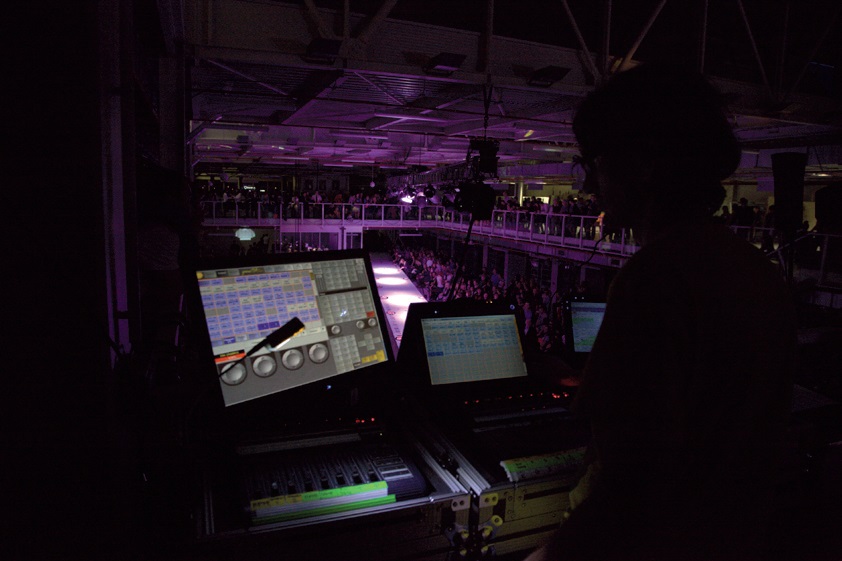
An operator handles a fashion show with a software version of the MA Lighting console, MA OnPC with a help of two touchscreens (GUI simulates a real console) and two MIDI controllers with engine faders.
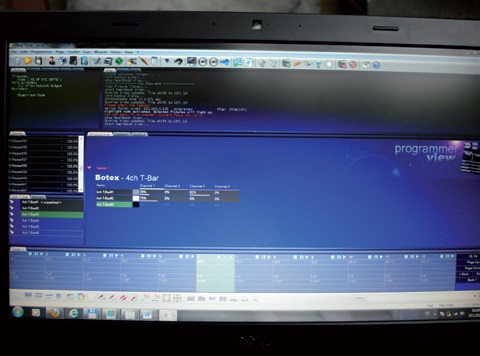
A detail of graphic multimedia interface eCUE console, which provides tremendous options of linking lights, video, audio, an inexhaustible number of adjustable parameters, handling with dozens of playbacks; this highly sophisticated software is designed for architectural, very extensive, demanding and long projects without the need of being operated; graphic interface make the impression of already being a specific programming environment.
2.2 Programming a cue
Before one can handle the changes, it’s necessary to create the individual cues. It is the task of a lighting designer in its visual and functional aspect and of an operator – programmer of a lighting control board in its programming, recording aspect. There are hundreds of types of lighting control boards and each of them has (at least a little) a different syntax, logic and terminology, control, other pros and cons and therefore other usage as well (e.g. the concert control board Avolight, versatile and highly sophisticated control boards MAlighting and user-friendly LT, Strand, ETC and others). To some extent, manufacturers of consoles determine how to work with a given console board by implementing certain functions that are manipulated in a certain way. Recently, it becomes apparent that the operator of a console board is more of an IT programmer than of a lighting technician, due to the advanced development of lighting consoles, extension of software versions of lighting consoles and the great possibilities of their complex functions.
Requirements for mastering at least most of the functions of the lighting consoles comprise the system of the processes, priorities of commands, selecting modes, creating libraries for intelligent, multi-channel devices, patching etc. In practice, one can encounter a situation that an operator or lighting designer requires a specific type of a control board, which he is familiar with and which he wants to work in the project with. The other, more usual case is when the control board is given and a programmer and / or operator is a local technician – he has to be perfectly familiar with the console board to meet the requirements of the designer as soon as possible, otherwise the work is being endlessly prolonged. It could be said that the programmer of light changes translates instructions of the lighting designer into the language of computers – control board.
Therefore, he has to know as the language of the control board as the language of the lighting designer as well and that is also one of his skills – mutual harmonization on terms in communication. If a lighting designer doesn’t have his own operator, with whom he continuously cooperates and has a good rapport, it is necessary from the beginning to harmonize the terminology and to describe exactly the apparatus of lights (maximum accuracy is reached with the use of numbers instead of designations, for example “third PC at the rear “) and orientation in the space (” house right / left house “). Communication between a lighting designer and operator concerns especially the major venues and productions with a large number of conventional lights, moving heads and LED lighting, when the operator doesn’t often see, which lights are being on and directs his attention only according numbers and instructions of a designer. Because there is only little time for programming and there are tens to hundreds lights, before the actual programming, the designer with the operator prepare groups, which are logical units of several lights (for example a series of contra PAR’s, front blue wash, etc.) and the so called palettes for intelligent, multi-channel instruments.
Palettes
The palettes are recorded individual parameters or their combinations, which will be repeated in the performance and are a initial “pool of resources” for the further work with instruments (e.g. palettes for positions of moving lights – the whole area, middle or forestage or palette for colors – often mixed special colors in addition to the basic CMY / RGB, etc.). They are a way of storing and organizing different settings for moving heads. This preset palettes are always available during programming, so instead of long explanation of such a type: ” we move all spot lights of numbers one to ten to the center of the stage, we reduce the zoom and add a magenta color” (when it is not yet clear which middle is that, how much to reduce and how much saturated the color is), just a few brief commands are sufficient: “Group two, palette three, eight and ten.” The entire cue is gradually build in such a manner, stored under a number and appearance and fading times are assigned respectively other times or a function for intelligent heads. (For example MIB – “move in black”, i.e. the head starts moving to the next position not before the moment, in which it doesn’t cast any light in order to avoid intrusive movement of fading out instruments in the scene that might be perceived). Such cues are up to hundreds in one performance.
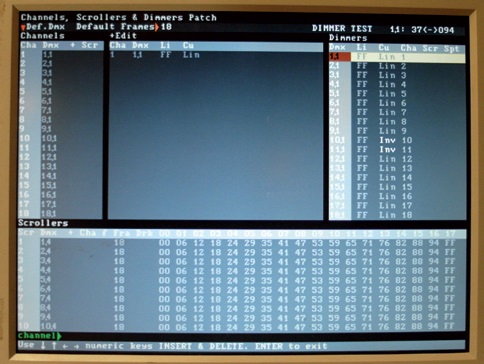
Softpatch – the detail of a patch chart shows in the upper part (among other things), which channels control which “dimmers”: a full number is a virtual channel (a number indicates a specific lamp in programmed CUEs), a number with a decimal point is a number of a real “dimmer” (controlled instrument); this patch is 1: 1, where the channel 1 controls dimmer 1.

… and this is the same cue as it looks like in the graphical interface of lighting console of a particular type: There are numbers of channels being on (lights) at the given moment in the upper section in blue boxes, the value of their performance in percentage is below them, in the left lower part, where the cue list is shown, it is possible to read that it is a cue of number 100.
2.3 Handling a performance
While the process of programming is more demanding at the big productions and actual handling of performance consists of entering the command Go at the right time (all the cues are set so the change take place automatically with the required timing, as the operators take turns and often don’t have the possibility of noticing whether all is correctly illuminated), on smaller stages and in contemporary dance, the role of the operator is more interactive. He has to decide already at the beginning (even with regard to the capabilities of a lighting console), whether to prepare a program for the performance, which content is sequence of cues (and whether he is going to handle it manually with a crossfader or automatic Go), or handles the performance “by a hand”, i.e. with the help of groups of lights / group and their intensities, which assigns to the programmable faders – submasters. He achieves the desired lighting atmosphere by their combination. In this case, it is necessary to take the complexity of the scene into account, i.e. how many submasters must be used and thus the number of fingers required for pulling down and up of the current and the next cue. When the operator decides incorrectly, it can happen to him that he will be forced to use all of his fingers (which is not actually ideal because of their different length). Lighting by submasters is frequent especially during guest performances at other venues where there is no time for programming cues, and it is therefore necessary to prepare thoughtfully the content of submasters (groups of lights and their intensities) – then it’s possible to handle a performance of dozens of changes with 24 submasters, with which combinations is the adequate atmosphere achieved. The dynamics and timing of changes are then fully in the responsibility of the operator.
Submasters, however, are also used in combination with programmed cues where additional light has to be added to them during the performance (to add intensity or fill the space if for instance the actor steps out of the delimitated area), or vice versa reduce the intensity (there is too much light at some areas, which might happen with imperfect focus and wrong ratio of intensities of individual lights). An experienced and sensitive operator can use submasters for live addition of light to the atmosphere, for instance if he wants to boost dynamics and expressiveness in a scene. Event and concert productions rely a lot on the experience of the operator who often has to improvise and react quickly to action on the stage, he must be prepared for unexpected situations (technical problems, bad timing of performers, etc.) and must have a prepared “plan B”. In other words, he should predict what all can happen and how to solve it in a best way. For that, he needs other team members and connection with them among other things. It’s not everything, but perhaps the previous text is sufficient for an idea of what work might entail for the operator of a lighting console board: it’s both a programmer’s role in creating a lighting form of a performance – understanding the syntax of the console and correct (and fast) use of all its capabilities according to the ideas of the lighting designer, secondly, delicate work in the handling the performance according to the ideas of the director – it’s necessary to be focused and somehow “be there”, to follow the performance, its rhythm. Some operators sometimes complain how terrible it’s to sit down every night behind the console board with the responsibility that whatever they do well, no one would notice, but if something goes wrong, everyone will.
3. The architecture of light
WE CREATE DYNAMICS BY CONTROLLING THE LIGHTS
Let’s review some information from previous lessons. The main principle is that we do not (due to its physics properties) see the light itself, we do see the light through the objects or bodies that it affects, so that the nature of those objects, the way they appear, depends directly mainly on three actions of the light into the space: almost all of the question of lighting resides here.
We do see because light generates three actions in the space.
– diffusion
– reflection
– refraction
Three actions that are possible thanks to the four properties of light:
– direction
– intensity
– color
– movement
As light has mainly 3 principle aims: the very heart of the work with light is:
– to create the space
– to create the atmosphere
On the other side: space is primarily a void, a void which can be defined by delineation of limits to it. To define a space is to give it limits, containments, either you want to give him a sense of expansion or pressure.
Space is mainly composed by 4 elements:
– volumes
– surfaces (plane or curve)
– elements or objects (bodies)
– internal void
Using this particular grammar, one defines “ lines of tension” inside the space, and so, one can begin to define a vision. In space, there lie the shapes of things that light has to animate and bring into relation. Light builds the space. The space through the action of lighting should breathe and transmit emotions or feelings. Light should participate on the structure of the show, scene by scene; underlining the rhythm of the show, bring the third dimension to life: the deepness. Particular attention has to be brought to the general equilibrium of the space: how to bring in relations objects and bodies.
The main instrument that defines the space is contrast (“a difference or an interval between two chromatic effects are directly confronted”). An image is the external shape of a body perceived by our senses; in that case by our sight. While “to imagine” is “to represent” through and in the mind.
Contrast is the basic instrument for composition with light: one can learn to recognize the different contrasts and with simple exercises, one can try to understand how they work, then to use their different powerful action into the space or defining the space itself. Using contrast, the differences in the visual field, one organizes it, one separates the things in order to see them and recognize them for unifying them in a single and coherent visual field. Contrast is the very first instrument of composition; so that the final composition offered to the audience is a useful sequence of images. An image becomes specific and carries a sense and poetry only if supported by clear intuition born on the stage, and well translated with the help of the correct lighting technique.
Work of Josef Svoboda
3.1 Motivated lighting
Simulation of weather in theater with light
It is quite simple to create lighting for a scene so that there would be an obvious difference between day and night time. For noon , it is possible to simply flood (warm with yellow filter) the stage with light and for “night” to lower it or to use blue (cold) filters. For completion of a sunset can be used a tinge of red light. Simply to achieve authenticity as nature suggests. Warm summer and cold winter days can be told apart easily using warm and cold colors. Another option is to supplement these effects by other scenic effects, e.g. the sound of wind, rain, etc.
However, the center of interest here is mainly an effort to achieve a variable effect either when there is a shift in time in the plot, or just to evoke a changing atmosphere in the scene. It is unthinkable in the interior space to open the windows and hope that the expected atmosphere simply happens. It is a nonsense, partly because there shouldn’t be any windows in a theater hall and secondly because the performances usually take place in the evening, so almost every time, it is necessary to create a daylight scene using available light. It is thus possible to determine the basic characteristic rules, with which one can be inspired:
– spring and summer can be induced by warm colors,
– autumn and winter can be achieved by cold colors,
– shadows are longer in the morning and evening than at noon,
– it’s possible to create solar or lunar rays by one source of strong light,
– cloudy sky can be achieved by diffuse lighting (frost filters or fluorescent sources of light), or in other words, with light without actual shadows.
In stage lighting, there are several problematic factors while creating atmospheres of weather. The first is the multiplicity of lighting instruments which often create multiple shadows for one object (actor) and therefore it is not possible to use a suitable lighting instrument in the area of a large stage that could throw the light over the whole stage in a way that everything would have a single shadow. For the shift in time within the plot, it’s necessary to arrange more of such instuments or at least somehow to arrange the movement of this single source closer or vice versa further towards the stage. Due to the laws of physics, it is known that intensity of lighting decreases with the receding source of light. Using common sense, it’s therefore possible to eliminate the use of a single source of light and that’s because it would have to be somewhere in the auditorium, which is quite not possible in reality. It is therefore convenient to focus the light in one direction, although it is used from multiple lighting positions (front ramp / bridge – FOH, proscenium bridges, false proscenium, fly bars etc.). For instance in this case, it is then necessary to increase the intensity of the right side of instruments more than the left side. The left side should throw light negligibly, so that the performers wouldn’t be completely left in the dark for the left side of the auditorium (if it isn’t the intention). It is achieved by this that the actors have their left cheek lit more than the right one all over the acting area. There are then more shadows visible at the stage, without viewers being aware that there is only one shadow and only single direction of shadows visible in the world outside of the theatre. To the human eye, the decisive is the view into the face and not onto what is behind the characters.
A related problem is often insufficient space – a distance and (un) suitable height – for placing sources of light in such a way that it would be possible to create long shadows. Distance is related to loss of intensity of lighting and on the other hand, the height with the availability of placing the source of light. The source shouldn’t be right in the viewing angle between the audience and the acting area. The positions can be complicated even for the side lighting ( units placed from sides), which are too low, because of the location of the entry area for an actor or manipulation with scenic elements. In addition, they can be easily blocked either by accident or by negligence. Therefore, it is sometimes necessary to think over the right position of the source of light, which produces a long shadow. It is also necessary to perceive that the long shadow and stray light around the object casting a shadow may inappropriately throw light at the background and the things that are meant not to be seen. Another problem may be the total number of instruments, which are available to a lighting designer. There should be as many as possible of them to create the most realistic effects. But even with a small number, it is possible to create a perfect illusion – it just takes a bit of ingenuity.
It is often possible to choose already used lights (directed / focused) or to create an effect from a basic lighting of the scene. Another possibility that is offered by the theater (and the entire theater space) is the use of signs and symbols. One precisely and clearly visible backlight unit with yellow // orange filter labeled as sun – the audience would not have a problem to understand that when it shines, it is obviously a beautiful sunny day.
Royal Opera House, 25. 1. 2015
3.2 Timing
Theatre is a process that takes place either in real-time or abstract time and has its own laws as such. Unlike the architecture, the stage lighting is dynamic and the timing is one of its key factors. With a different timing of changes, which transmits the action in the scene from space to space or from mood to another situation, that is the way of changing the meaning or even move the plot in the time of staging. Although it is possible to make changes in the range from the cut (no time) to changes in the level of several tens of hours, but this is of course meaningless in a performance which is in two hours long. Exactly the timing is a mean that is often neglected and therefore it is possible to witness a “disco” and to watch one quick change after another without any reason. For the topic of simulation of weather, it is suitable to choose changes of slower nature, often in a matter of minutes. During observation of what occurs outside, it is evident in most of the cases that weather changes slowly as well as the daytime and they are not faster in most of the time then in the mentioned range of minutes.
The resulting timing of changes depends on the dramaturgy of the performance and it is hard to imagine that the audience would enjoy a half-hour change without anything else happening on the stage. Even so these transition changes that concerns changes of weather shouldn’t be shorter that one minute. The present day control with computers allows the timing also to be differently phased. For that, the changes in the intensity of instruments that are connected into the simulation of weather could be timed in another way, even independently of the action on the stage. For example, the backdrop may slowly change color from pale blue to red during one scene and in the meantime, the other lights can react to something else during the ongoing conversion in the intensity from pale blue of instruments that are being switched off into the red of the ones that are being switched on. Timing of fading and incoming changes may be again different and also including the so-called delay of individual cues. Other options of dynamics of change can be achieved by this. Any change is good when it is slow, because a rapid change would highlight something in the scene. Various effects, which are available in a large number today in the digital age, should also be in its individual cues and transitions rather slow. If there isn’t projection technology available, effects of weather can be created by instruments, by its steady switching on and off, or even using special effect instruments – they can project through an animation wheel between the source of light and optics of instruments something like rain (falling drops), various flickering (imitation of forest branches), clouds etc. Given the cost of this type of animation wheel, it is often necessary to be satisfied with conventional lights.
3.3 Fading in, fading out
If there is the intention to shift the attention of spectators from the area in front left into the front right, a cue would be used, in which intensity of the instruments focused to the right increases and those directed to the right decrease. Such a transition is made best when the right side is lit quickly, whereas the left fades out so slowly that it wouldn’t be caught by spectator’s attention. Rapid changes attract attention. For instance, fading in can endure 3 seconds while fading out 12 seconds.
It may so happen that while even by slow fading out, the actors can say an important replica in the dark. In such a case, fading out can be delayed with a “delay” button at the console so fading out would start after a certain period of time that was set to the computer. Modern lighting consoles allow many ways of timing.
4. Implementation
The process of formation of a performance
At large venues, the order of what is going to happen is clearly given and planned. Time is scarce and very expensive. In the Czech Republic, it is usual to follow such a schedule: One to two set design rehearsals, sometimes three, if the performance is complex and large. During these rehearsals, the scenery is built into more of less final form, then it is lit and cues can be programmed. It’s simple math. Opera or dance performances tend to have approximately two to three hours of actual time. On average, about 150 cues are programmed. If each is created five minutes, then it is necessary to have twelve hours of actual time. One fact follows from this: lighting design has to be ready a long time before anything is about to happen on the stage. There is no time to think or to experiment. A lighting designer has to have not only a comprehensive idea, but he has to know exactly as well what means would be used to implement it. But how to get results in practice? There are many options, but one should develop a system and stick to it.
The exact appearance of the lighting design should be materialized into a so called light plot – a plan of lights, which indicates how many of which lights are located where: light types, their plugging in, position, filters, partially also focus. During preparation of the plan, a careful consideration should be given about fly bars, which are usually already occupied by set pieces and masking. It is necessary to calculate well with the height of fly bars and it is reasonable to have it discussed in advance with a lighting director and resident set designer. If moving heads are to be used, it is very much convenient to acquire as much information as possible about the given types of them. If the follow spots (tracking instruments) are to be employed, their positions and methods of use need to be specified in details. In short, it is advantageous to arrange the maximum of possible in advance. In the ongoing negotiation, it is good to inform and explain to partners, what is going to serve to what and to clarify why is that. That naturally often induces discussion that often contain the question of technical feasibility, respectively time consumption. No advice should be neglected as such, however, if accepted, it has to be within the intention of lighting design as the main responsible for it is actually the lighting designer. In such cooperation, there arises question of how much the lighting manager is competent. If the answer tends to be rather positive and he understands his job, there is no obstacle for leaving the things to take their course and only the order of work is to be followed. Trying to start with complex applications and proceed to simpler ones. When moving heads are used, it is good to begin with creating the so-called palettes for the position, color, focus and zoom. If this base is ready, then there follows focusing of lights that are suspended on fly bars, which usually takes the most of time. These lights are accessible with difficulty, usually at the height of 10-12 meters. It is better to try to join them into the so called groups. These groups contain logical units that can be used to speed up programming. Groups and palettes might be separated from each other, so that parameters of moving lights wouldn’t load into the groups with conventional lights when programming.
The scenery rehearsal is usually followed by one technical rehearsal, in which everything that is related to the technologal aspect of the performance is being harmonized: scenery, its movement, programming of fly bars, trap rooms, turntable etc. All is rehearsed with lighting and sound. Without exception, the lighting is being finished at this rehearsal. At the moment when all the necessary information and technical parameters are known, visual imagination of a lighting designer can be materialized into a real shape. A light plot should be drawn and the number of the circuit should be inserted into it. It might be advantageous to try to create at least as many groups and palettes as possible, although they would mostly remain unused, and many more of them would come into existence during programming. Some combination of lights can be turned on already during focusing and if they seem to be fine with the lighting designer, they can be upload as a auxiliary cues.
These could be shown to director and set designer from time to time in order to make sure that all from the creative team follow the same direction and it may drag them into participation in the creative process. When the light are focused, there would be little time to rest and then long programming of cues follows. It is quite standard to sit in the middle of the auditorium, an ideal location for a viewer, there is a table with a device capable of communication with the operator of the console, stage manager, operators by fly bars and follow spots. The best is to have a lighting console next to the table, which unfortunately is usually not possible, so a monitor has to suffice for showing circuits, parameters and cues. A group list, cue list, good notepad have to be prepared. The process of creating cues is too complex and is determined by many factors, so this problematic cannot be captured in few sentences, however, several facts may shed more light on it.
It is better to follow the system of whichever sort. The operator of a lighting console or lighting manager should receive commands that are communicated clearly and understandably – as they do not know the idea of a lighting designer so the formulation “… Please some nice, warm, some sort of a dreamy like atmosphere …” is quite useless for them. Such a nice atmosphere can be achieved by commands: “… a group of 1 @ 50, 2 + 3 @ 25, the group 25 @ 50, circuits 6 + 10 + 12 + 18 + 57 @ FF4), heads 1-6 pallet 1 @ 70, HMI number 5 @ FF color 10, CYC group of 12 + 14 @ 80. This write as CUE 5 time of the crossfade 5 seconds … “
It is good to be able to accept an advice, if the local staff has found out a better idea than the lighting designer. Mutual respect produces best results. Anyway, a lighting designer spends a lot of time with them and should be able to speak clearly and openly to a large extent not only to them but towards the director and stage designer. It pays off to avoid expressions as:”… We don’t have it yet, but we’ll do it and it will be the next ” when it is known ahead of time that it cannot be done. Better to take a risk of a bad mood right away than an explosion of anger later. Do anticipate how the director thinks and what shape he is heading to.
It is very much recommendable to constantly watch the time and existing progress of the work as well as to carefully monitor the time allocated to rehearsals and to schedule the time for programming so that it is really done when rehearsals are over. The time of rehearsals with people on stage, let alone with the orchestra, is fixed, it shouldn’t be exceeded even by a minute. Throughout the world, there are often accurate, hour after hour going timelines worked out that must be followed. If this is done, the work does not have pointless, wasted time. It resembles a bit the work of a film crew. Production work is greatly underestimated, and this often causes unnecessary confusions, leading to a loss of time. Waste of time leads to stress and stress inevitably leads to an explosive atmosphere. What is needed is persistence and patience. Lighting design is a serving branch of art – it serves to a performance, it also requires knowledge of craft and also the ability to communicate with the director, stage designer and production. If this all goes well, it is possible to create a lighting design.
Black Swan (directed by Darren Aronofsky, Fox Searchlight Pictures)
The Jacobin by Antonín Dvořák, National Theatre in Prague, design by Daniel Tesař. Source: http://www.narodni-divadlo.cz/cs/predstaveni/5690
Brazil ( directed by Terry Gilliam, 20th Century Fox)
Tasks
1.
Pick a song that you like and try to create a concept of stage lighting. You may use one of the available programs to execute the idea. Why have you pick these colors in particular? What determined the sequence of cues? Is there any detectable pattern? On what ground have you based the idea?
2.
Draw several basic compositions to the selected song. Can you reason why you selected such a composition in peculiar?
3.
Pick a music video and analyze all the relevant conditions that determine lighting design: Setting, time, location. Scenes, their duration, their mood. Can you evaluate the lighting design in it? Is there anything you would change to make it better?
4.
Some lighting designers use a model of a stage for their lighting design and that is something you can do as well. You may imitate various sources of light with sources of everyday use. In the large theater, the appearance would be similar, just bigger.
5.
Select a one-act play and analyze all the relevant conditions that would determine possible lighting design: Setting, time, location. Scenes, their duration, their mood. Determine how each scenes should be lit. Can you reason, why you have selected instruments directions, colors?
Is there a basis idea behind your choices, or it is just arbitrary?
Now, list all the interdependent phenomena, with which your lighting design should count with.
Now, write down all the limitations that you may expect in a theatre during the execution of such a light plan.
6.
Create a draft of the lighting design for
Winter night, Summer morning, An afternoon by the see, Cold morning in the rainy weather
Case studies
1. The Miracles of Mary
A scene from The Miracles of Mary (National Theatre in Prague, 2010), there are approximately 40 actors on the stage and several layers of the lighting design to the depth. They can be simply described as the three key elements of lighting layout: first warm “white” plan of kneeling women in a highlighted field in contrast to the central rear plan in light blue wash, which is accentuated by back light through the scenery. Compare it with the light plot – this blue is made of PARs with filters L200 and frost R119 (frost – a diffusion filter, causing compact, homogeneous surfaces) from three battens each with ten PARs, plus PC lanterns from FOH position), the white back light is probably the HMI 2.5 kW – this type of a source has specific color temperature that is close to daylight (about 5600 K) and distinct intensity. If the fact is taken into account that there had to be about 60 lights in this single scene, on can easily calculate that with an average number of 150 cues for a performance, the task of a lighting designer is to think within the logic of groups of lights and their combinations, of colors and their combinations, positions of angles of lights etc. Thus no romantic fine art, no experimentation – pure mathematics and physics with the necessary dose of real imagination and experience.
This is an international comprehensive plan of lights – the types, number, positions, colors. This one does not contain particularly the numbers of the circuits and their focus, because it would be too graphically chaotic. It is the task of the head of lighting team to arrange an accurate patch and focusing of lights so that the design would work according to the intent of the author and “handle” correctly the programmed cues. If the patch and focus have been done differently, this setup would create totally different visual content on the stage. By the way – quality of technicians can be recognized among other on the basis of whether they are able to read a light plot, respectively, whether they can create it themselves. For touring performances, it is standard that the original light plot is adapted into a given area by the head of lights so that the resulting appearance is closest to home as much as possible.
2. Rusalka
A scene from the opera Rusalka (National Theatre in Prague, 2009) – unlike the present day expressional dance, the opera is epic, “big” production. It’s a challenge for a lighting designer to technically deal with the facilities of the background of a theater – use of fly bars for set design, problematic angles between individual layers, etc. Note four layers of the plan – (fore) stage, first proscenium arch, second oblique proscenium arch, backdrop. Although the space for positions of lights decreases with the depth of the stage because of the set design, the light in the rear plan is homogeneous, doesn’t create distracting shadows (sidelights were used) and furthermore highlights the scenery translucently from the rear, which compose the contrast component of the scene. The blue-themed (fore-) stage harmonizes with the rear plan in the “white” (i.e. light without filters of about 3500 K) thanks to its sensible work of the set design – white dance floors, white walls of the proscenium arch, white backdrop, white costumes.
Rusalka by Antonín Dvořák, National Theatre in Prague, design by Daniel Tesař. Source: http://www.narodni-divadlo.cz/cs/predstaveni/5318
Similarly as there are some specifics in the preparation of a theater performance with respect to the genre or type of theatrical space, the process of the emergence of a performance is different in relation to the type of production, i.e. the production / operational system, in which (not only) a lighting designer and technicians work.
3. Flashed By
Dance performance Flashed By (Nanohach)
Assignment and inspiration
At the beginning of the production, there was a poll that was passed around by the choreographer and author of the project, Lenka Flory. The question was: What kind of a woman is inscribed in your memory as a woman whom you admire and identify with? The resulting figures should have served to create associations connected with them and then they would have been used for fabrication of a story, which should have been manipulated into two different interpretations. The whole concept of creating reminds of a particular social game with complex rules, through which a one hour dance solo narrates about female heroines and their ideals. Means of expression used in the performance should have been minimalistic, both in lights, sound and costume as well as in video projection and should have brought several distinct motifs that might have carried significance in themselves or they could have been combined. And right the use of combinations changes their original appearance and creates different meaning each time to the viewer.
Preparation of a lighting design
During initial considerations about the visual side of lighting, these basic elements were found:
- Strong, sharply focused sidelights in two color shades (without a filter with a slight correction Lee 202 – ¼ CT Blue) spatially delineating the body of a dancer, sidelights by the floor also eliminate the white floor and rear projection screen as well so that they can be used simultaneously with projection and so it would not overlap / erasing it.
- Side lights of greenish color (Lee 242 – 4300 fluorescent K) illuminate only the white floor from a low angle, in such a way that it don’t shine onto the projection screen and the dancer can be only sensed in a reflection – thus the figure “disappears” in grayish dusk of reflected light.
- The light placed onto a moving cart that throws light at the dancer from the gradually changing angle while her long shadow shifts slowly.
- The light reflected from the cylinder of mirror foil, placed on a slowly rotating phonograph – a sort of a ” lighthouse”, light in the distance.
- PAR64 CP61 hung above the center of the stage on a movable arm allowing either direct lighting of a dancer with a direct beam of light anywhere on the stage, or lighting with the help of reflection from the distorted mirror foil that hangs over the back of the stage, caused by wide contra light – it evokes an image of slowly moving clouds on the white floor.
- Reflection from a similar foil placed behind the cyclorama, however, with the multiplied number of PARs, connected separately – an effect of variable fire on the cyclorama highlights the silhouette of the dancer standing in front of it.
- A strobe light placed behind the cyclorama allows to highlight selected moments of the performance and to blind audience for a moment and to transfer their attention elsewhere, to disrupt their concentration.
- White rectangle of light from the projector, available to be used as a contrast to the warm up to orange light from the PARs.
- Strong front light from a group of PARs (CP62) focused on the white surface of baletizol and projection screen, primarily used for lighting of the hall with the help of a reflection from white areas, but also during the performance as FOH.
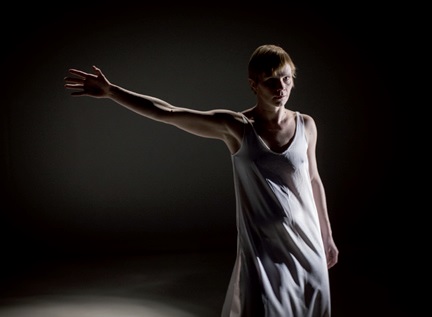
Performance Flashed By; strong, sharply focused sidelights of profiles delineate in space the body of a dancer (Photo: V. Brtnický)
Technical production
Already at the first implementation meeting, it became clear that technical-productive part of the project would be more complicated than the production and choreographer had expected. It became obvious that three data projectors would be needed: one positioned above the auditorium for front projection onto the rear projection screen, the second over the center of the stage for projection onto the floor and the third, placed on a movable arm for projection of details at various, precisely defined locations at the stage (e.g. the projection of flame onto the dress of the dancer). Other specifications were even more adamant. Projectors for front and top projection should have been as similar as possible, if not identical, so the images could have been arranged together well, but for the upper projection, it was necessary to use a projector with a very wide lens to achieve maximum of an image from a standard height of 6 m. The third, mobile projector should have been as light as possible because of the capacity of motorized arms, but with the greatest luminosity available, so that the image assert itself in competition with other projections and lights. As the estimated number of the video sequences approached twenty (eventually it crossed it) and some videos should have appeared from different projectors, it was obvious that the overall handling of projections would be necessary to be managed synchronically from the lighting control board with the help of a media server.
Using projection in this range also determined the size of the stage. The maximum size of the upper projection with the use the widest available optics from the distance of 6 m in 4: 3 format (a video format closest to the square) would be 6 × 4,5 m, and therefore the dimension of the floor should have been of such size. Fortunately, it was a solo dance and thus the surface was sufficient. The dimensions of a screen should have been also corresponding to the dimension of the floor, but after the first rehearsal unveiled that the optical effect was unsatisfactory and so video format 16: 9 was used for this front projection and it reached 6 m in width and nearly 3.4 meters in height in actual implementation. A screen of such dimensions had to be acquired by the company from the budget for staging. Other technical equipment had to be borrowed or hired, including console board and the USB / / DMX, barndoors for fading projections, controlled by DMX protocol and projectors. There is probably no need to explain to anyone that regular commercial rental rates of all necessary equipment are not within financial limits of any independent dance group living from the grant system. (purchase cost of wide lens for the top projector would swallow the entire budget of the performance.) It is often an unsolvable situation – if the owner of the technology receives a commercial contract in the date of the performance, it is not possible to rely on discounted (or free) loan and the performance can be canceled.
Rehearsal and preparation
Production of the Flashed By was taking place with interruptions for four months in three main rounds. After preparing the choreography and video material during three weeks, followed by the first technical “try out” in a theater space – work on lighting design, music, viewing of video footage for the first time live, and their mutual interconnection with dancing. During this week, a detailed script of the performance came into existence and also specific requirements for technology came out of it. For example, it turned out that controlling the projection from the lighting console is absolutely indispensable. A following three-week break was dedicated to getting needed parts of technology. The technology had to be at the lowest possible price, while functional, reliable, compatible and most importantly available for all rehearsals and scheduled performances: the technology was collected out of seven places in the city. The last round of rehearsals took place for a weeklong period of time.
Here, after two days of interconnecting, programming began and the major part of the performance was settled into a more or less satisfactory form. But throughout the whole time, new and new videos were being shot and processed, which replaced the old versions and then were inserted into somewhere else. Work with video projection and especially its processing, rendering is very time consuming and the entire team has to have tremendous patience. There is always waiting for something and the work progresses forward only very slowly. The last phase of creation actually proceeded after forced month long intermission during the three days before the premiere at the Ponec theater. ( All the different places with different spatial or technical layout complicate the job considerably, however, these experiences are beneficial for the future life of a hosting performance)
Working with the media server
Production of Nanohach worked with three data projectors and about thirty video sequences. Such an amount of projections and options cannot be handled from an ordinary player, a special computer for work with video is needed – the media server. How it works and how it is connected? There are several programs for media servers. In the case of the Flashed By, there was the program Arkaos V-Jay available, which is more user friendly software version of this brand. It is not so much difficult to install, but cannot do so much as the “large” Arkaos. But it was sufficient for production of the Flashed By. The Arkaos V-Jay has three control options: either to connect it via MIDI output with a MIDI controller, or the videos can be simply mapped on a computer keyboard – then they are launched by pressing the appropriate button, or the media server is connected via USB / DMX with the lighting console. The “magic” converter is an electronic box, into which a USB cable from a computer is connected and on the other side, a cable with DMX connector into the light console is fixed. The required video sequences are assigned with a number of the DMX circuit (patch) in the computer and it is controlled from the lighting console in the same way as the lights are turned on.
The advantage of this system in comparison with the previous technologies of control is the possibility of smooth blending of video sequences instead of jump shift and setting its intensity similarly as it is possible with conventional instuments. Attributes (properties) of the video, including the assignment to the correct projector, are set for each patch separately in the media server.
Conclusion
The performance Flashed By of the Nanohach group faced big problems throughout all the time of creation, caused by lack of financial support for their project. In contrast, the team succeeded in linking the basic stage elements of the performance and it’s apparent from the results of the work that the choreography, set design, sound, costumes, lights and video projections were created together and influenced each other from the very beginning of the creative process.
4. Markéta Lazarová
Markéta Lazarová in the ABC Theatre
Though it is an available option for directors to select a lighting designer, it doesn’t necessarily happen so often as it is very common that a lighting designer is perceived as a redundant expense in an overburdened budget and its role can be assigned to a local lighting technician. Furthermore, the person responsible for the visual aspect of a performance is the set designer. As the functional relations in a theater vary according to many factors as the size, financial mean available etc., also the role of a lighting designer may be more or less significant or necessary in the given performance. Here, the role was a role of a technician and operator of a lighting console who follows the demands and request of the director, program the lighting console and is responsible for flawless course of rehearsals, dress rehearsal, premier and subsequent reruns. At the initial meeting, the main issue was the stage and costumes. Possibilities and requirement of lighting were considered separately at a meeting with the director, where he was given information about technical equipment of the theatre as well. This was according to a well-established model with an exception of one small, but essential detail: the director requested several headlamps for rehearsals, which was a good sign.
The organization of rehearsal
A new staging is rehearsed about twelve weeks from the first reading rehearsal to the premiere according to the custom. First, in a rehearsal room, then even in a sort of a stage and about four weeks before the premiere, there comes the so called technical rehearsal when the entire scene is built up for the first time and lighting comes into play. The entire lighting is created during one day (!) and all light changes as well in the ideal case. A dress rehearsal is usually the day after the technical rehearsal. The last three weeks before the premiere are always the most demanding for the entire technical staff of a theater. At night and early in the morning, everything is being prepared for rehearsal, during which light and sound changes are mixed with action at the stage, and after the rehearsals, the scenes are being immediately dismounted and new scenery is built for the evening.
Lighting Design
For lighting of the stage, front lights were used to divide the varied scene into two sections, although lighting from the sides was predominant in the production. Significant, mostly cool hues of LED wash was interconnected with a special combination of bright greenish filter of an ancient date of fabrication (a foil of the celluloid treasure was discovered in a storage of discarded lighting equipment) and a soft cold correction Lee 202 – ¼ CT Blue. A wooden structure surrounding the stage was being penetrated by the light from unfiltered PC 500 W, located 2 m above the ground. Furthermore, low lighting was used from three open traps that were partially covered with wooden bars and then strong floods of three rows of PARs (CP61) covering the entire stage, and projection foils were used for brightening as they were located behind the scene in order to reveal two rear designs of the performance – images of death and monastery. However, primarily, the intelligent lights was the keystone of the work that carried most of the work during the performance for the entire duration of the performance. In total, all the possible lights that are available in the theater were used for lighting – 200 conventional lights, sixteen LED washes, seven intelligent lights (four spots lights, three wash lights).
Programming
The work with intelligent lights, on which the lighting design of Markéta Lazarová was based, required very good organization and preparation of moving heads before the start of programming. It means careful preparation of a variety of positions, colors and quality of the light beam (focus, color, beam). The time, invested in these preparations, pays off later, because a complicated search for already used attributes of setting of the moving heads is avoided. Light changes are programmed during technical rehearsal usually without actors. Extras are used from present technicians. For proper setting of intensity and selection of the colors of light, it is very important to have at least a part of costumes. When creating actual lighting cues, the director and his artist progressed in a very precise manner (an average of five to eight changes on one page of the text), so technicians were changing the design of the production constantly up to the preview.
Although these two performances were coming into existence under different conditions, the authors weren’t discouraged by large technical demands of their vision. They took the lighting design as an equal partner of the set design and stage action, which paid off to them well. Both the approaches had their cons. In the case of artistic production in terms of an independent theater, it is mainly the lack of financial support for their work, in the case of creating within a stable institution of a permanent venue, it is inflexibility and ” petrifaction ” of rules as arising from the complexity of the smooth running of a large theater house. There is no perfect condition available and it can be only approached when artists and production come out to meet and find a joint functional compromise.
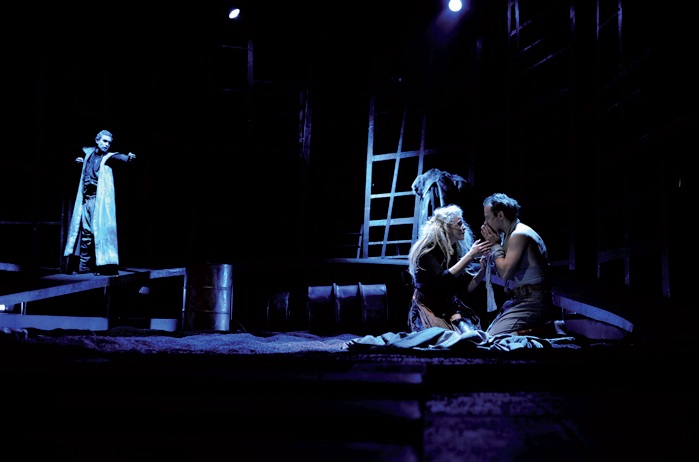
Performance Markéta Lazarová, ABC Theater in Prague; Lighting through a wooden construction that surrounds the stage deepens the space of the image and underscores the dramatic character of the scene (Photo: A. Hrbková)
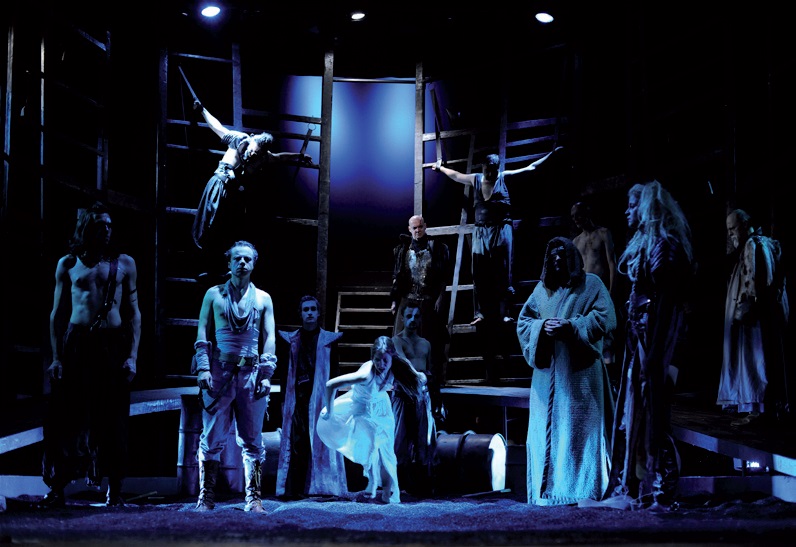
Performance Markéta Lazarová, ABC Theater in Prague, mainly intelligent lights were used for the performance (photo: A. Hrbková)
Sources and literature
On Stage Lighting [online]. [Retrieved 2015-05-07]. Available from: http://www.onstagelighting.co.uk/
GRAHAM, Leigh. Stage Lighting. The Drama InfoWeb [online]. [Retrieved 2015-05-07]. Available from: http://www.dramainfoweb.co.uk/pages/lighting.html
SALZBERG, Jeffrey E. a Judy KUPFERMAN. Stage Lighting for Students [online]. [Retrieved 2015-05-01]. Available from: http://www.stagelightingprimer.com/
Lighting Effects. The Drama InfoWeb [online]. [Retrieved 2015-05-07]. Available from: http://www.dramainfoweb.co.uk/pages/lighting_3.html
Stage Lighting Guide [online]. [Retrieved 2015-05-07]. Available from:: http://www.stagelightingguide.co.uk/
The Lighting Archive [online]. [Retrieved 2015-05-01]. Available from: http://thelightingarchive.org/
Theatrical Lighting Database [online]. New York Foundation for the Arts [Retrieved 2015-05-07]. Available from: http://lightingdb.nypl.org/
Learn Stage Lighting [online]. 2014. [Retrieved 2015-05-07]. Available from: http://www.learnstagelighting.com/
Stage lighting. 2001-. Wikipedia: the free encyclopedia [online]. San Francisco (CA): Wikimedia Foundation [cit. 2015-05-07]. Dostupné z: http://en.wikipedia.org/wiki/Stage_lighting
The Lighting Library. In: [online]. [Retrieved 2015-05-07]. Available from: http://www.mts.net/~william5/library.htm
Literature
BENTHAM, Frederick. The art of stage lighting. 3rd ed. London: Pitman House, 1980. ISBN 978-027-3015-444. Available also from: http://amzn.com/0273015443
BERGMAN, Gösta M. Lighting in the theatre. Totowa, N.J.: Rowman and Littlefield, 1977. 426 p. ISBN 08-747-1602-0. Available also from: http://amzn.com/0874716020
ESSIG, Linda. Lighting and the design idea. 2nd ed. Belmont, CA: Thomson/Wadsworth, 2005. xi, 281 p. ISBN 05-342-7494-3. Available also from: http://amzn.com/0534639240
ESSIG, Linda. The speed of light: dialogues on lighting design and technological change. Portsmouth, N.H.: Heinemann, 2002. x, 150 p. ISBN 03-250-0508-7. Available also from: http://amzn.com/0325005087
GILLETTE, J.Michael. Designing with light: an introduction to stage lighting. 6th ed. Dubuque, Iowa: McGraw-Hill Companies, 2013. ISBN 978-007-3514-239. Available also from: http://amzn.com/0073514233
HAYS, David. Light on the subject: stage lighting for directors and actors –and the rest of us. 1st Limelight ed. New York: Limelight Editions, 1989. 173 p. ISBN 08-791-0126-1. Available also from: http://amzn.com/0879101261
JONES, Robert Edmond. The dramatic imagination: reflections and speculations on the art of the theatre. New York: Routledge, 2004. 162 p. ISBN 08-783-0184-4. Available also from: http://amzn.com/0878301844
KELLER, Max. Light fantastic: the art and design of stage lighting. New York, NY: Prestel Pub., 2010. ISBN 978-379-1343-716. Available also from: http://amzn.com/3791343718
LIVINGSTON, Jason. Designing with light: the art, science and practice of architectural lighting design. 2014. xv, 320 pages. ISBN 978-111-8740-477. Available also from: http://amzn.com/1118740475
MORGAN, Nigel H. Stage lighting for theatre designers. Portsmouth, N.H: Heinemann, 1995. ISBN 978-043-5086-855. Available also from: http://amzn.com/0435086855
PALMER, Richard H. The lighting art: the aesthetics of stage lighting design. 2nd ed. Englewood Cliffs, N.J.: Prentice-Hall, 1994. xvi, 251 p.,. ISBN 01-350-1081-0. Available also from: http://amzn.com/0135010810
PARKER, W, Harvey K SMITH a R WOLF. Scene design and stage lighting. 5th ed. New York: Holt, Rinehart, and Winston, 1985. ix, 596 p., [16] p. of plates. ISBN 00-306-4248-5. Available also from: http://amzn.com/0030642485
PILBROW, Richard, foreword by Harold PRINCE a John B WITH CONTRIBUTIONS BY DAWN CHIANG. Stage lighting design: the art, the craft, the life. 1st pbk. ed. New York: By Design Press, 2000. ISBN 978-089-6762-350. Available also from: http://amzn.com/0896762351
Test

